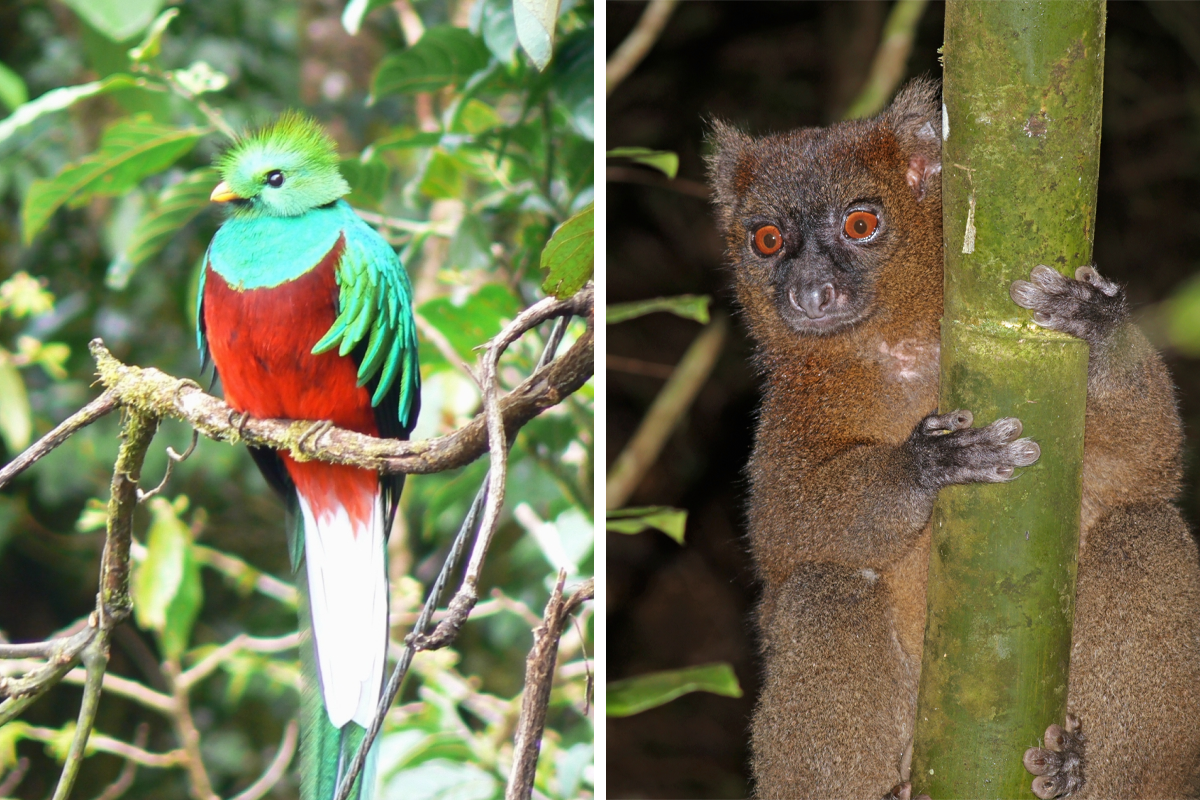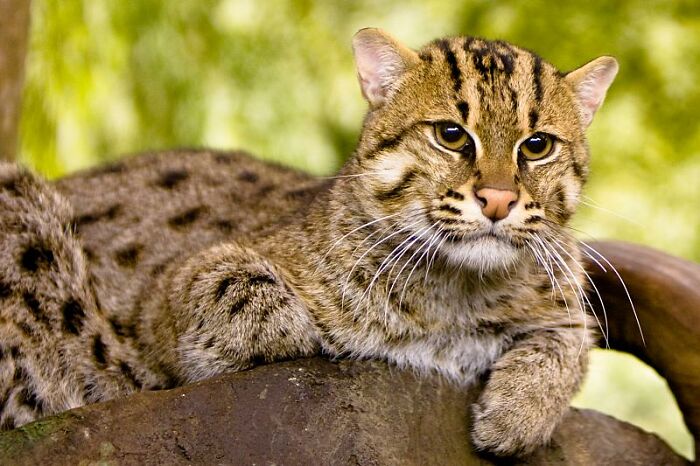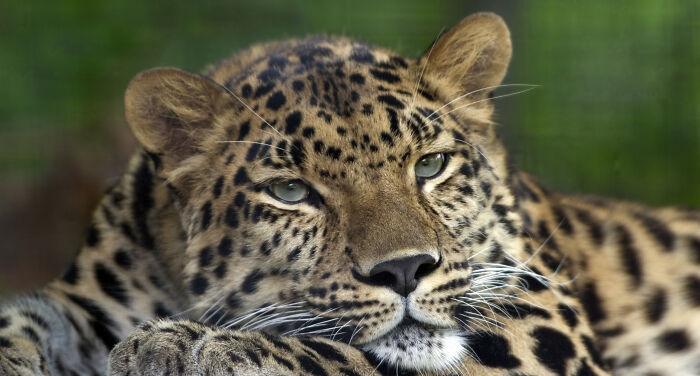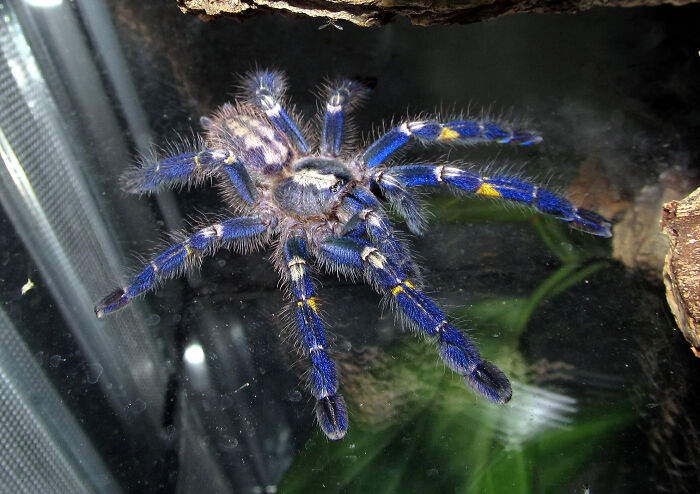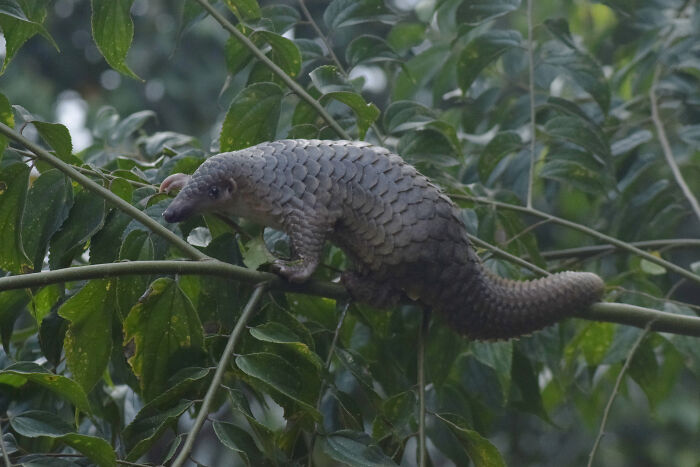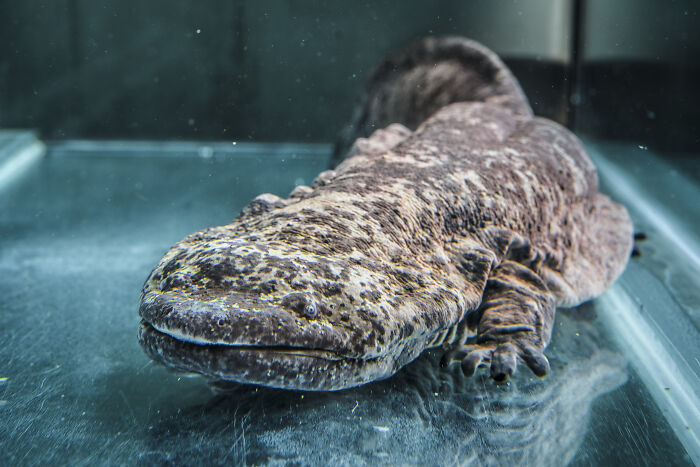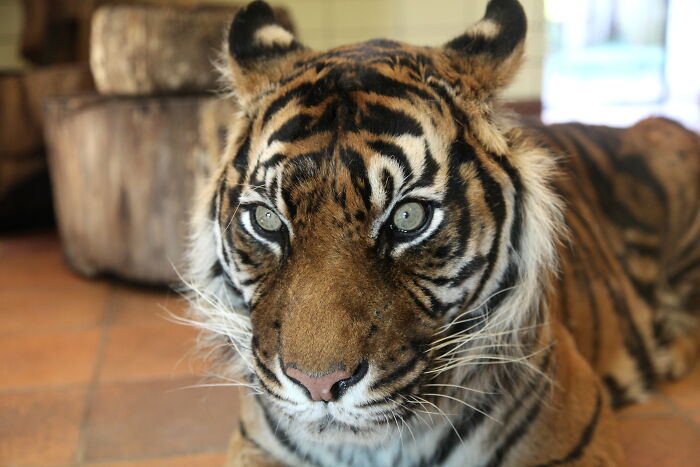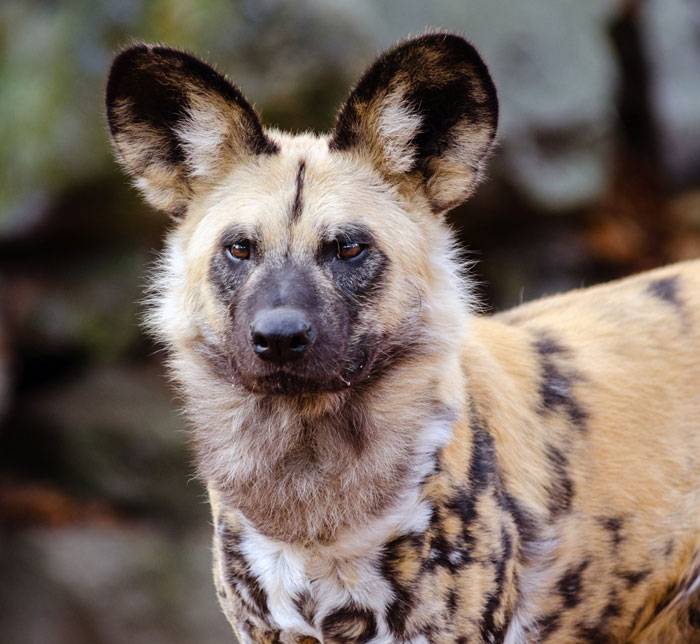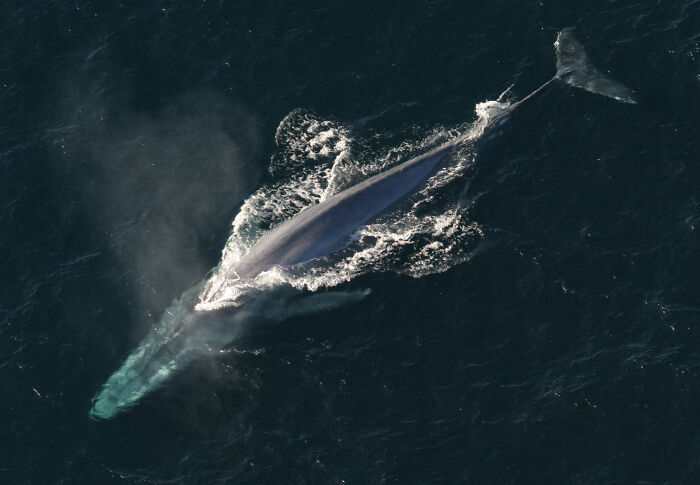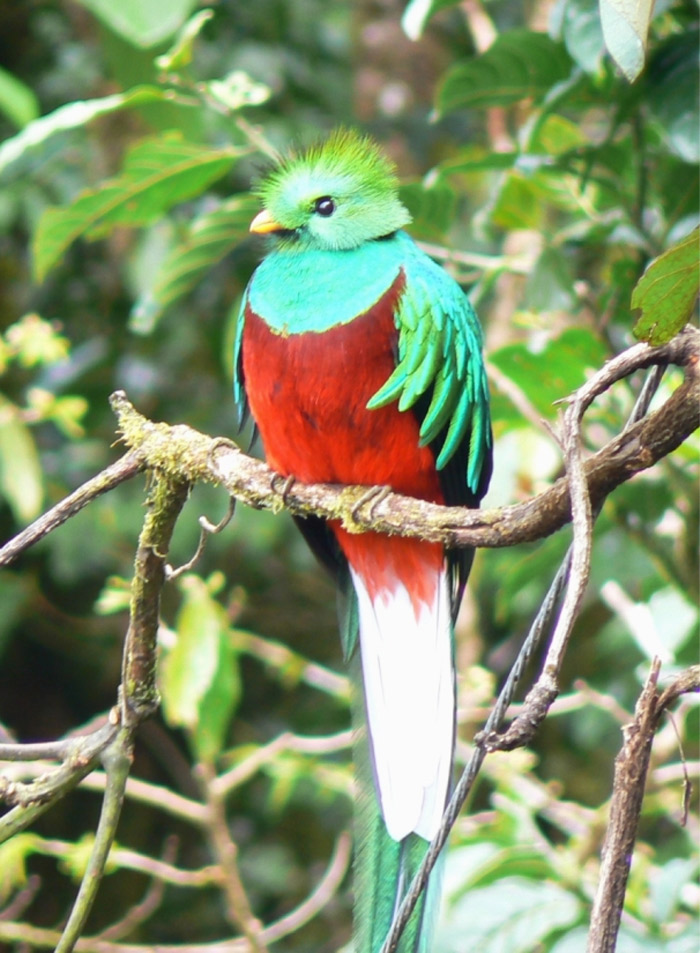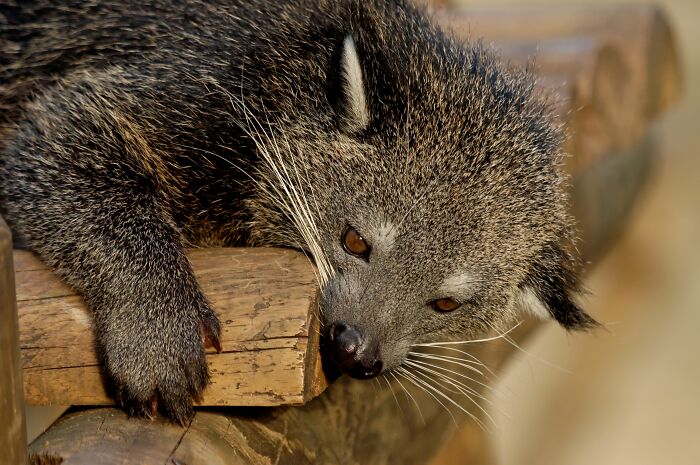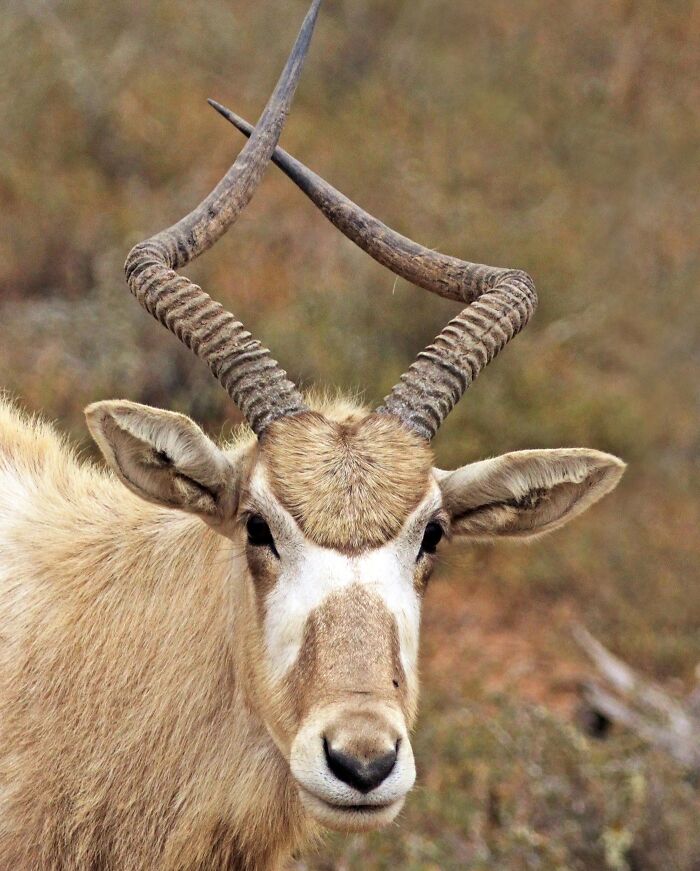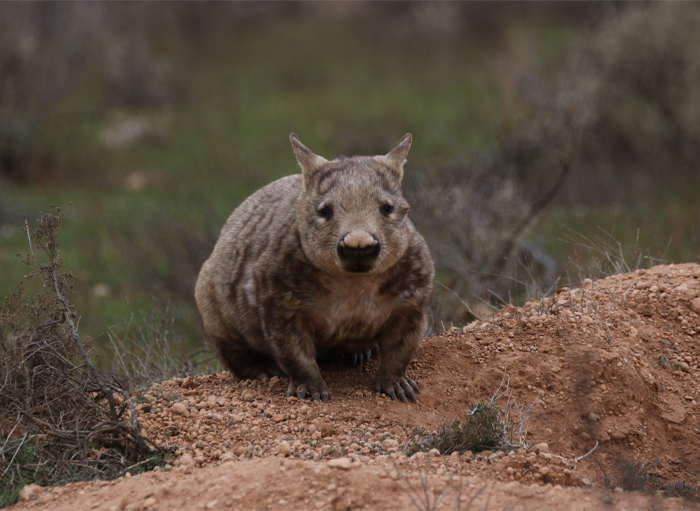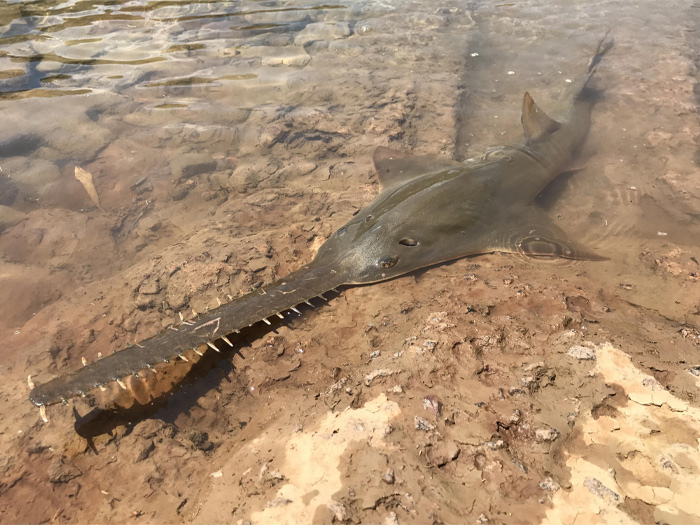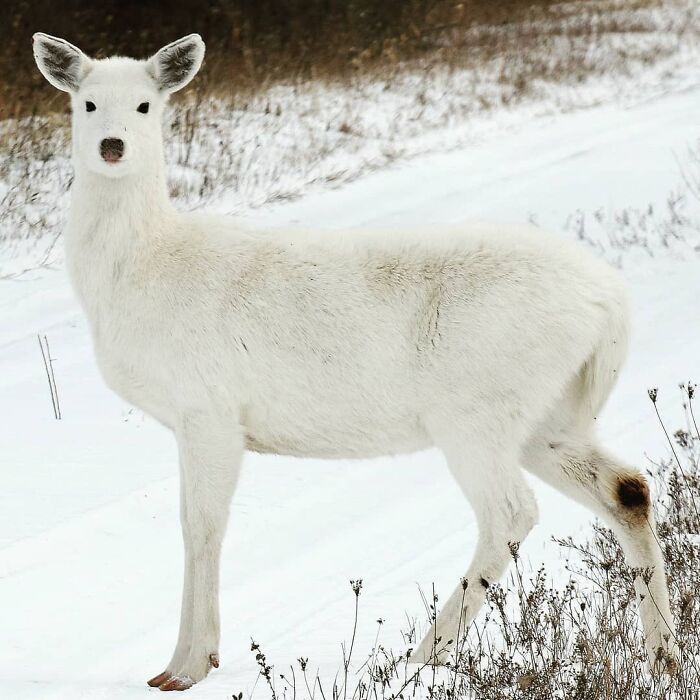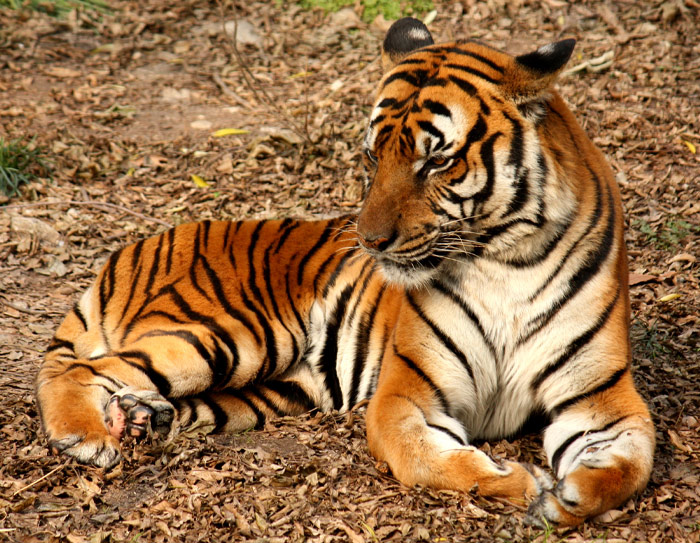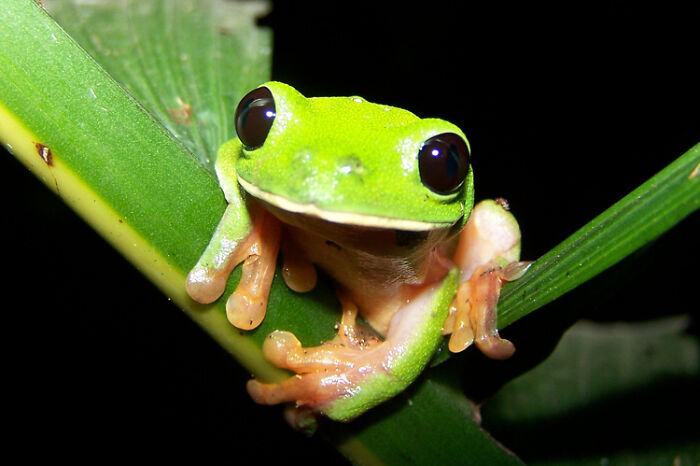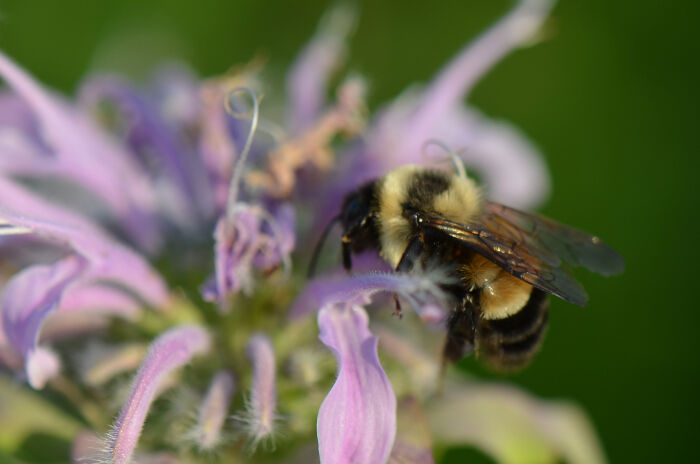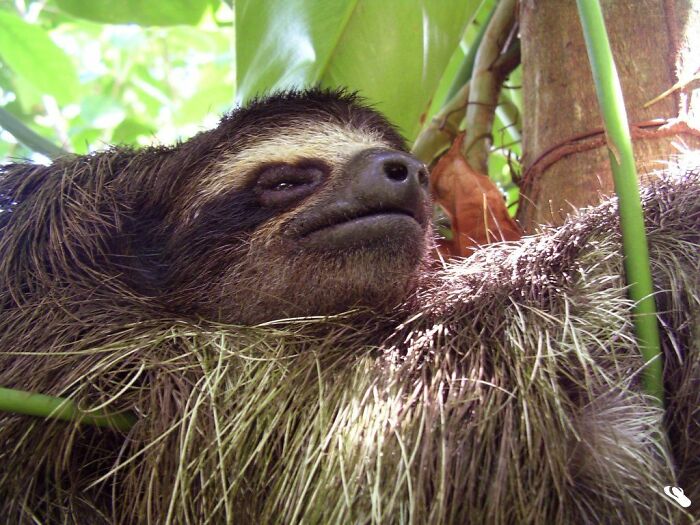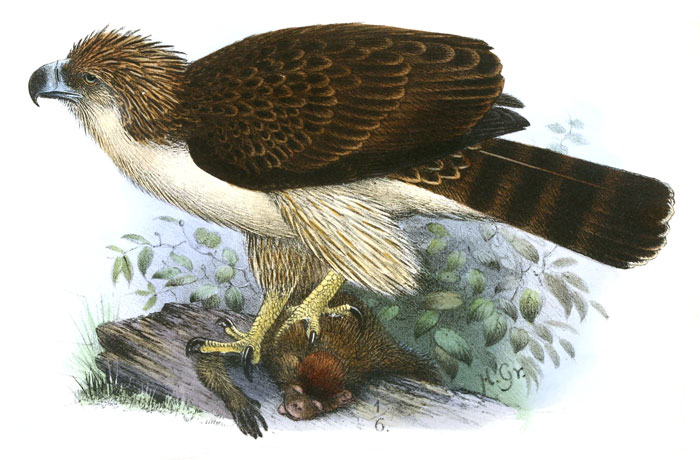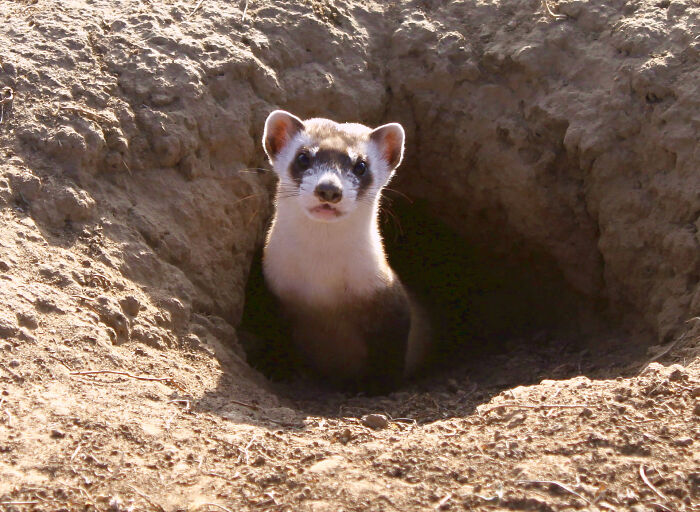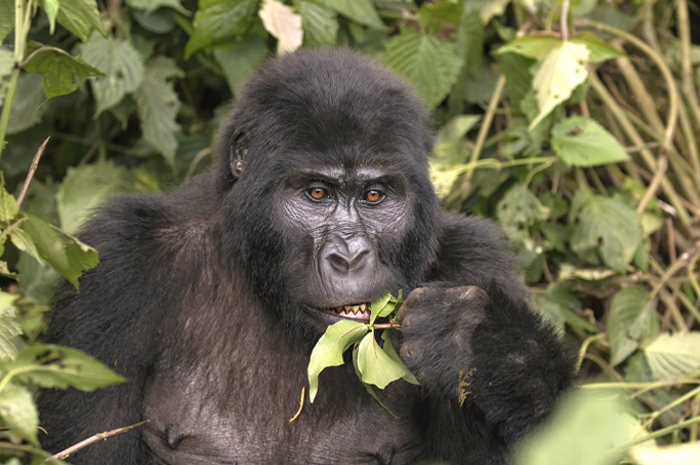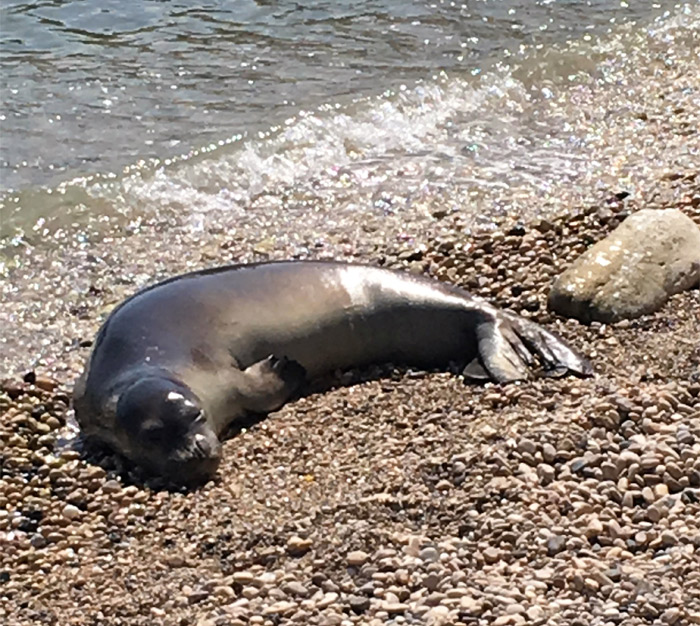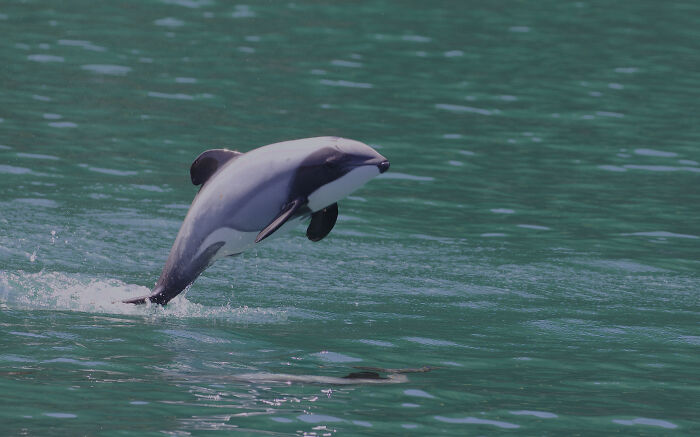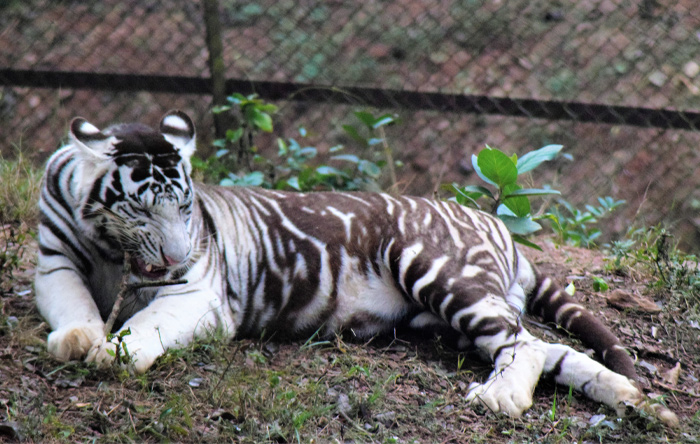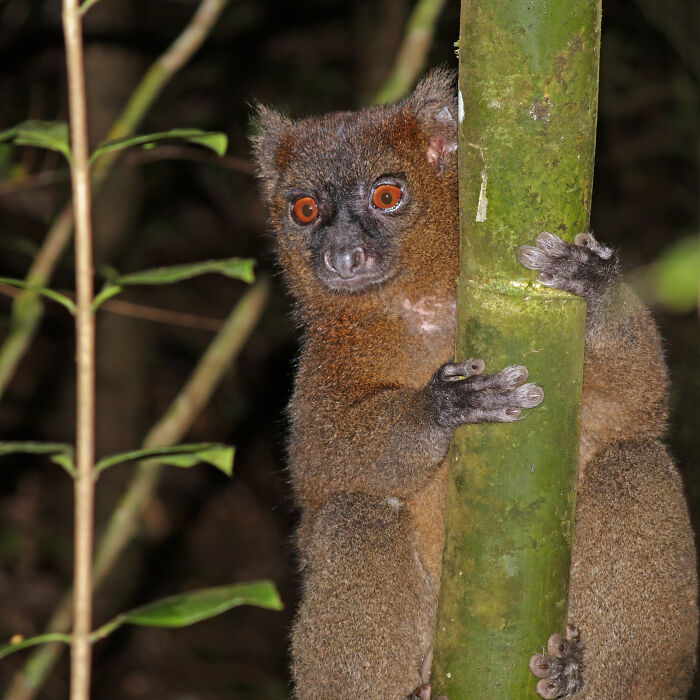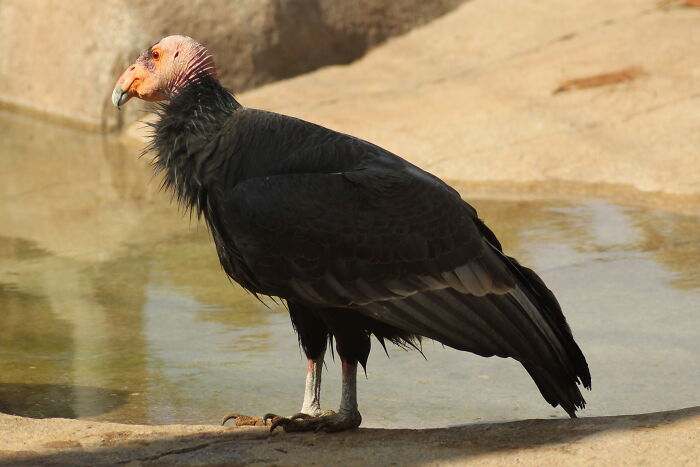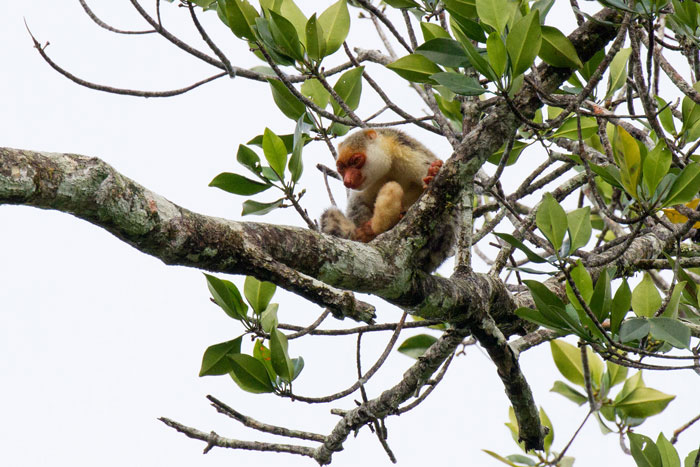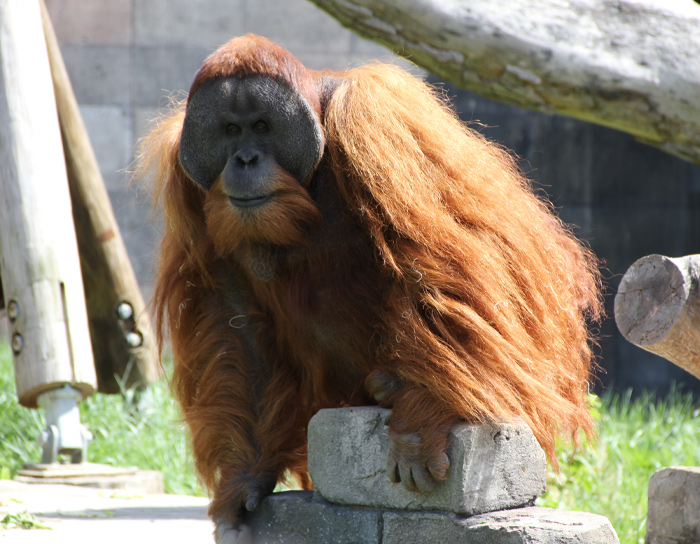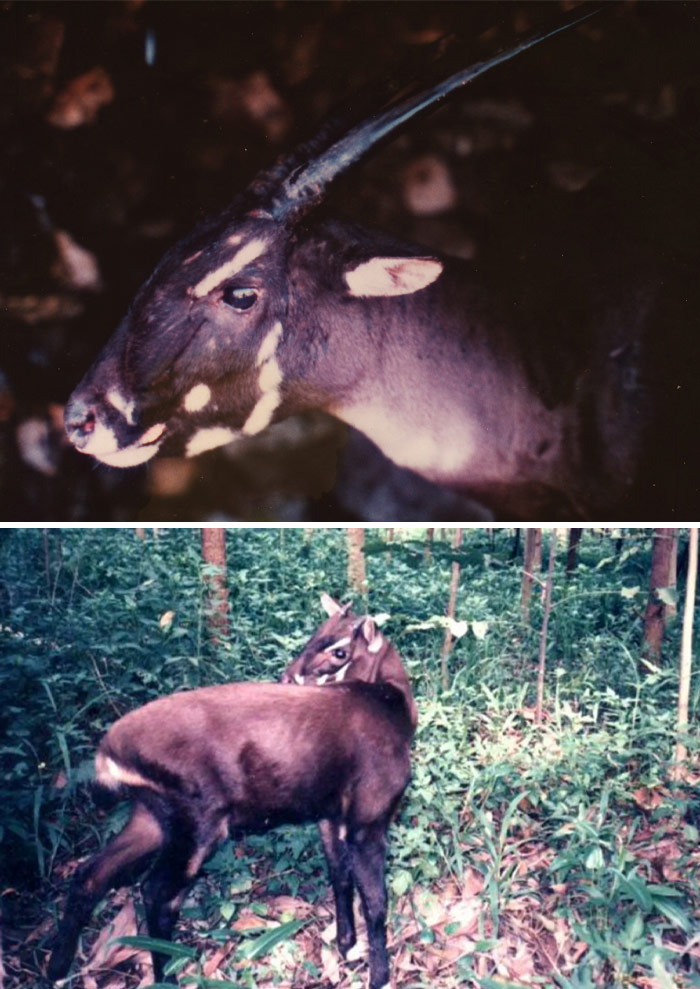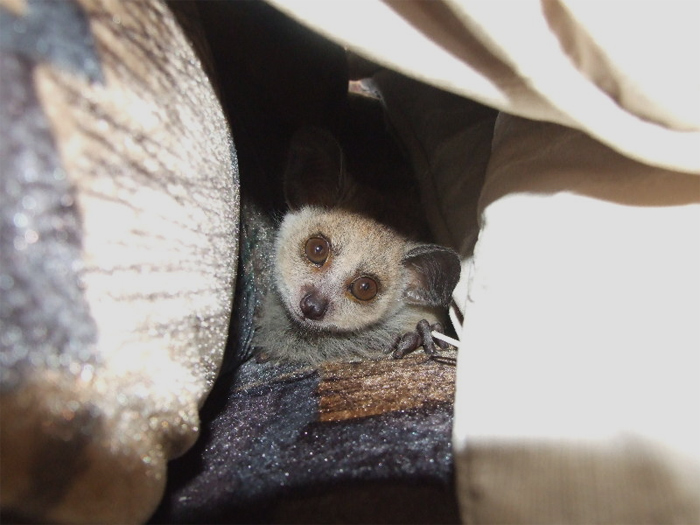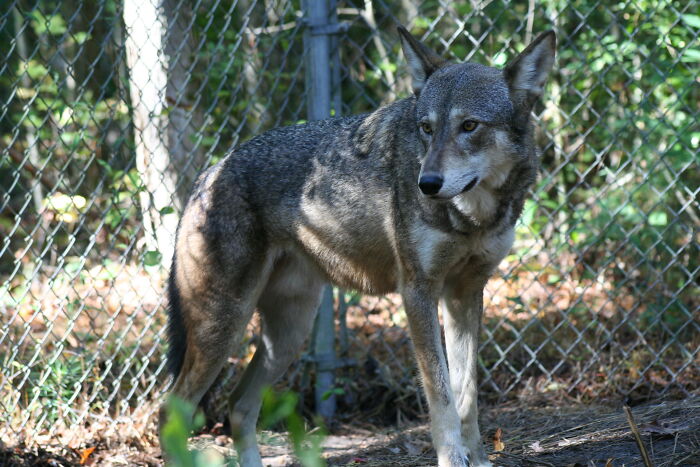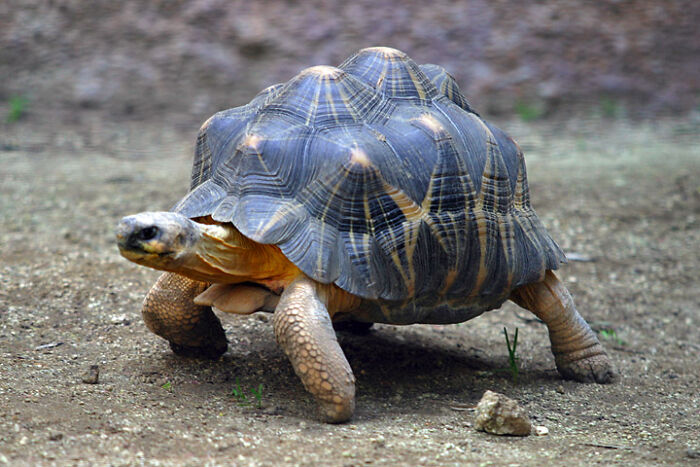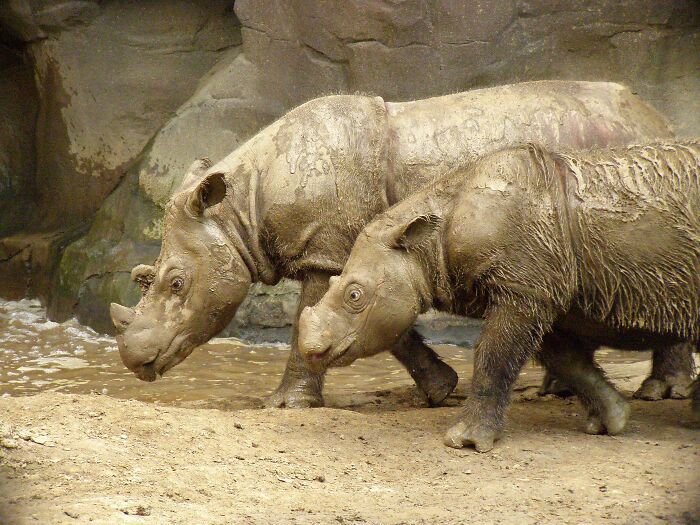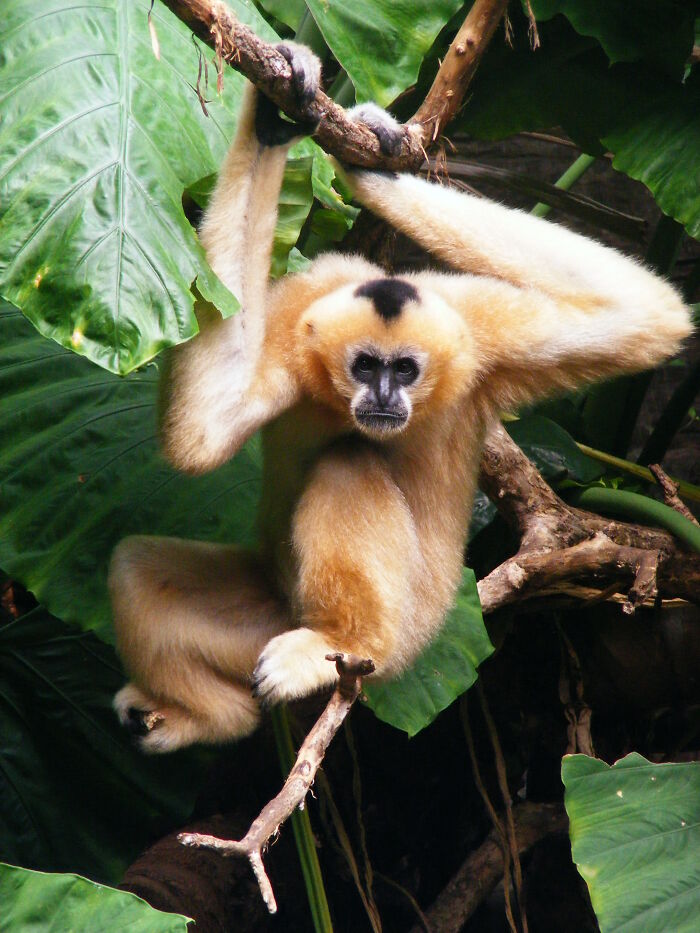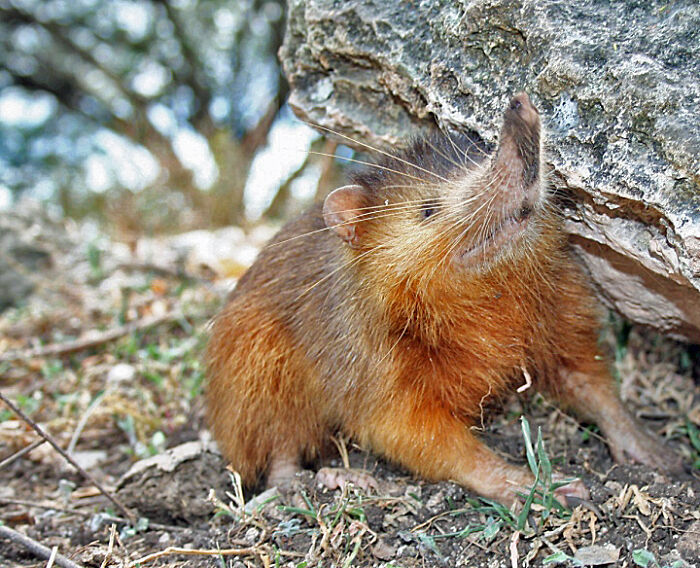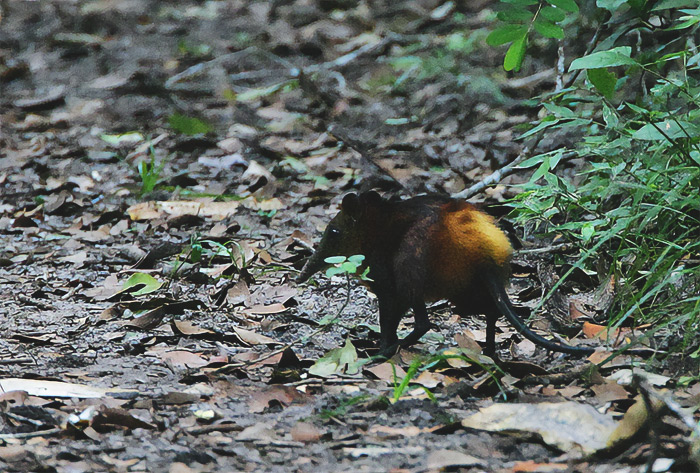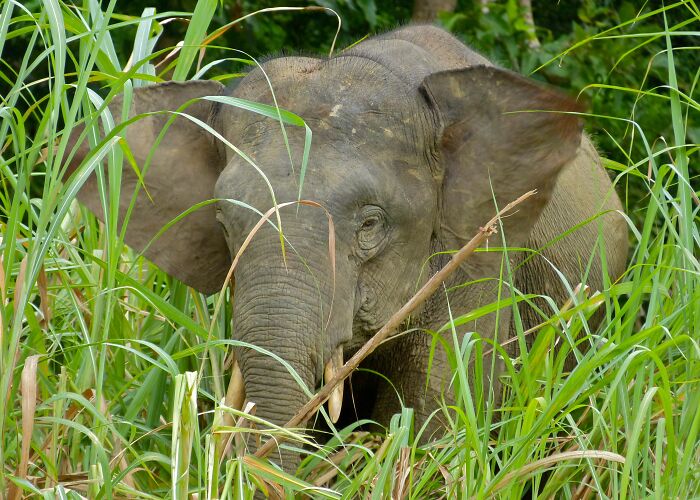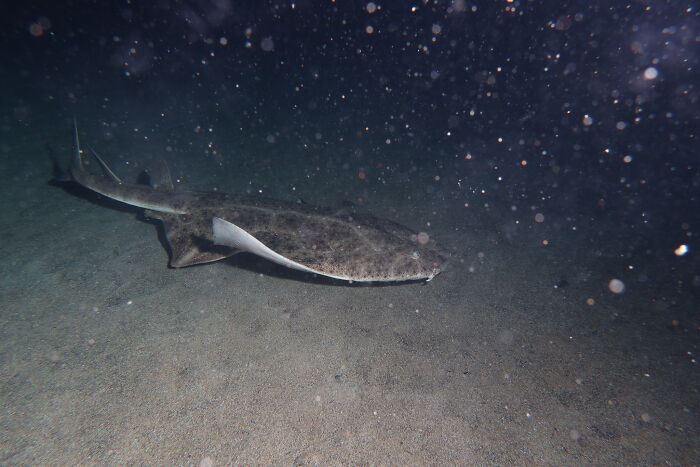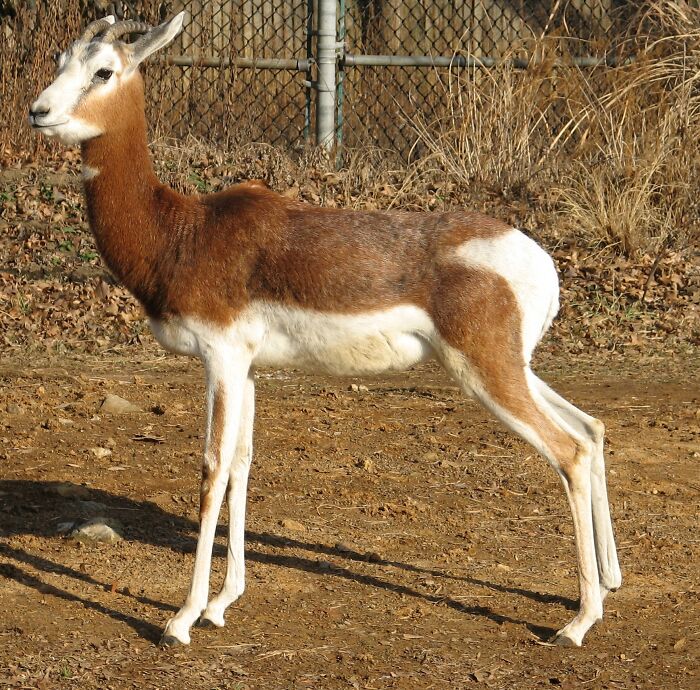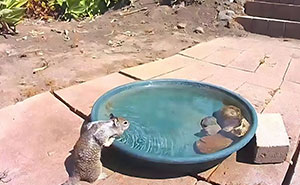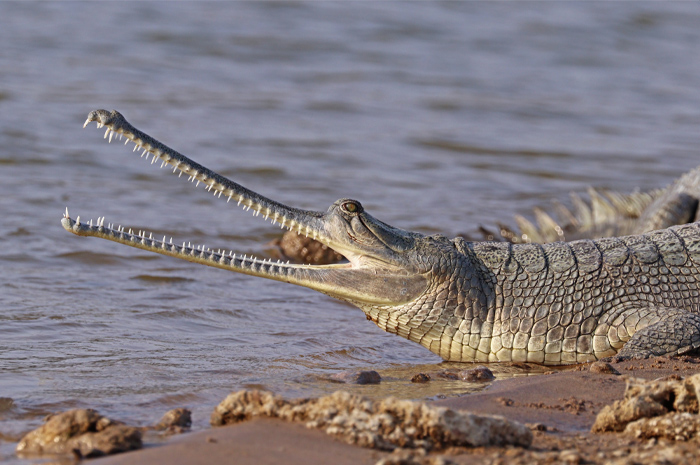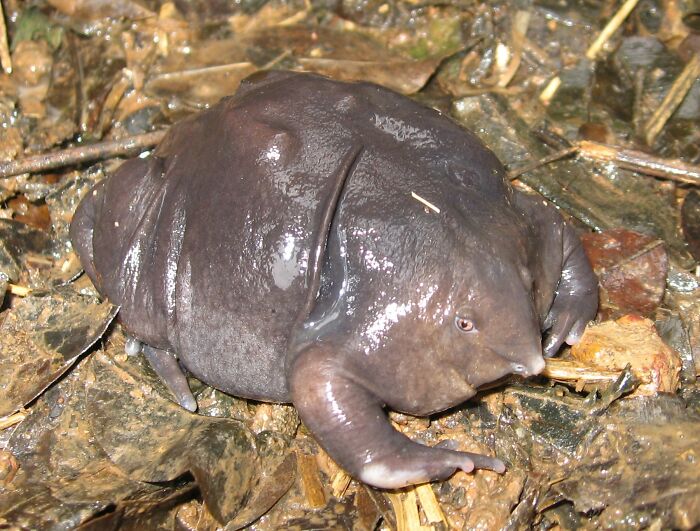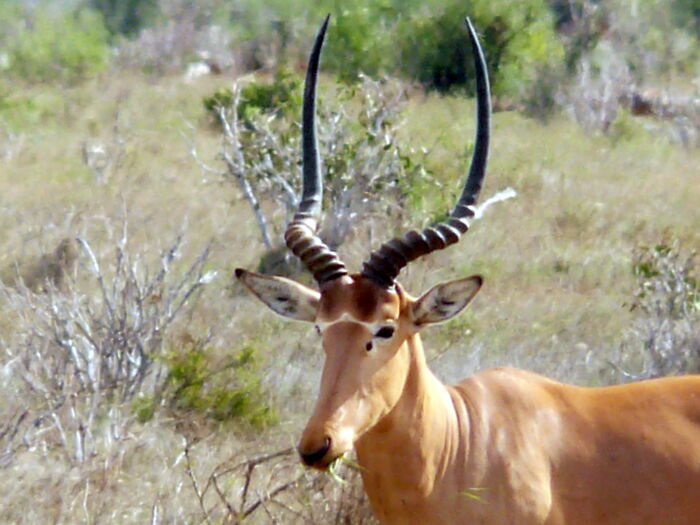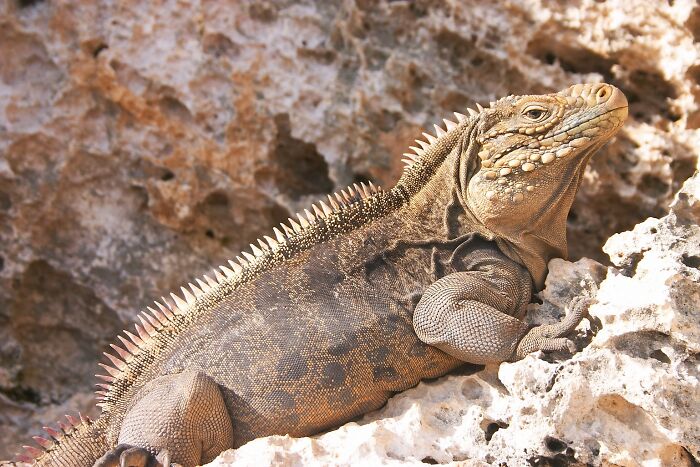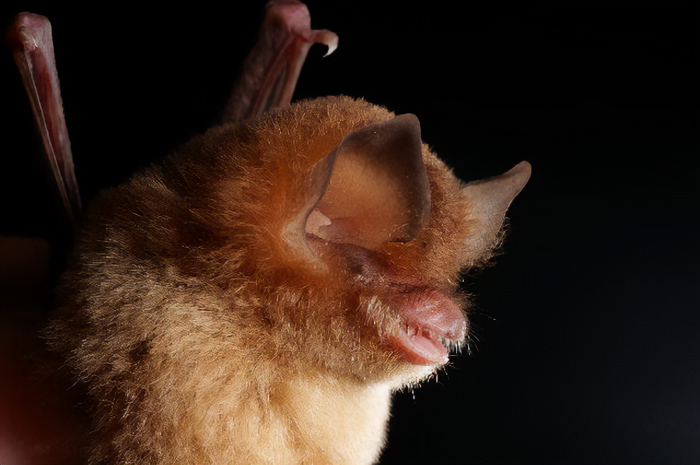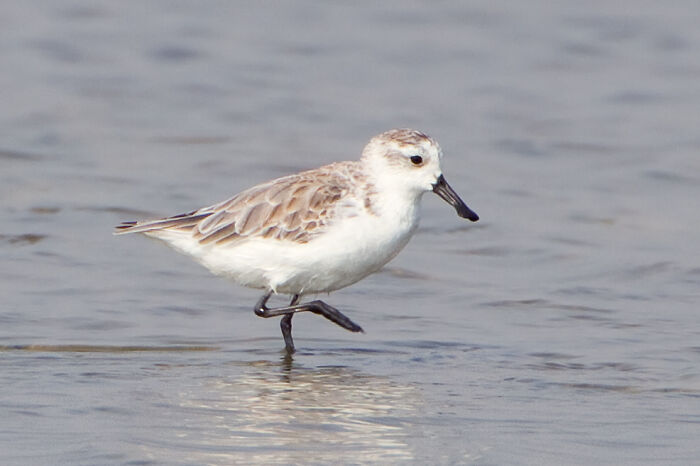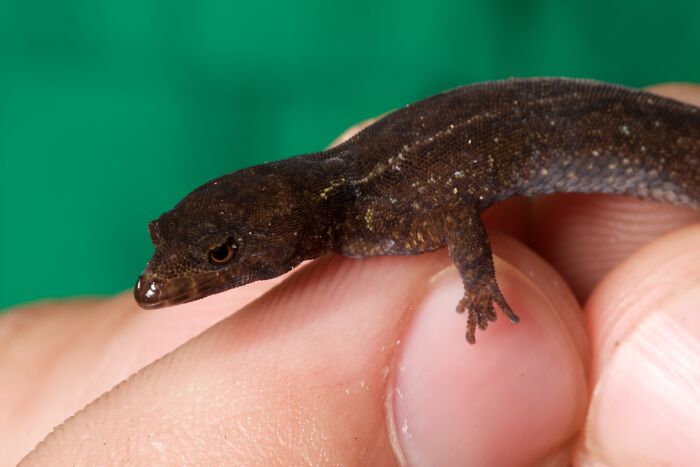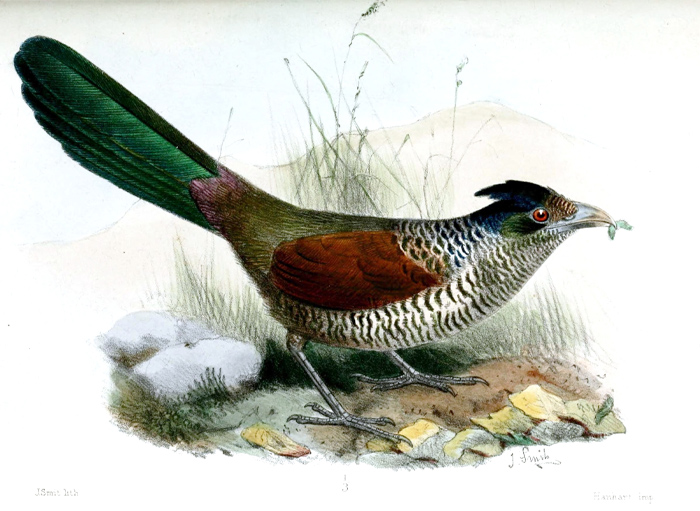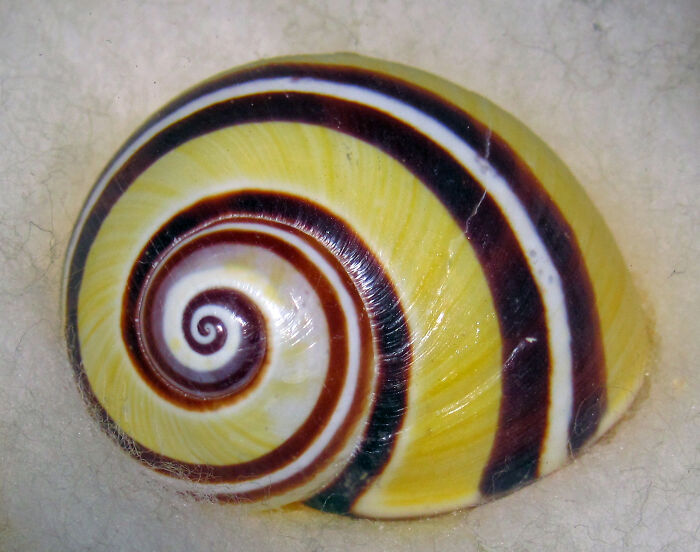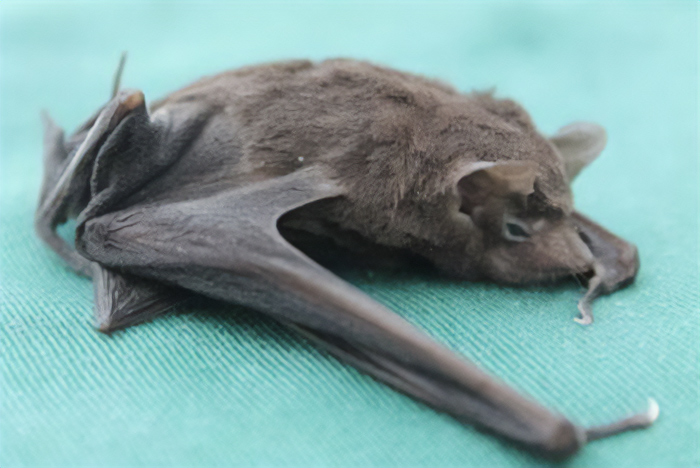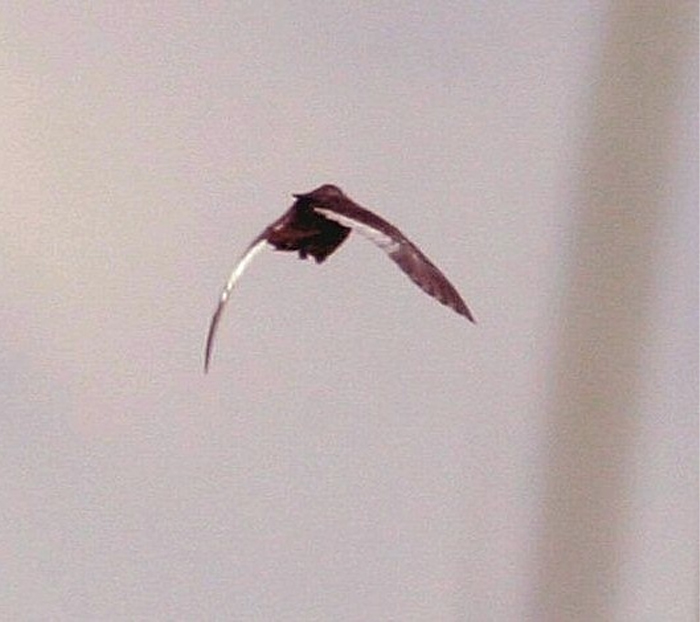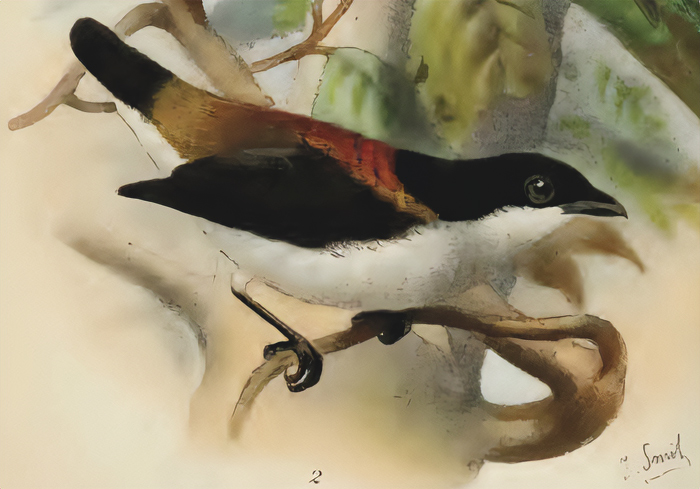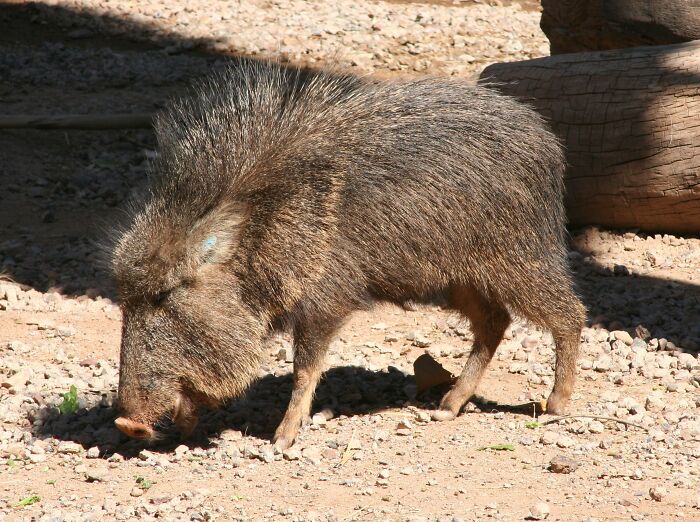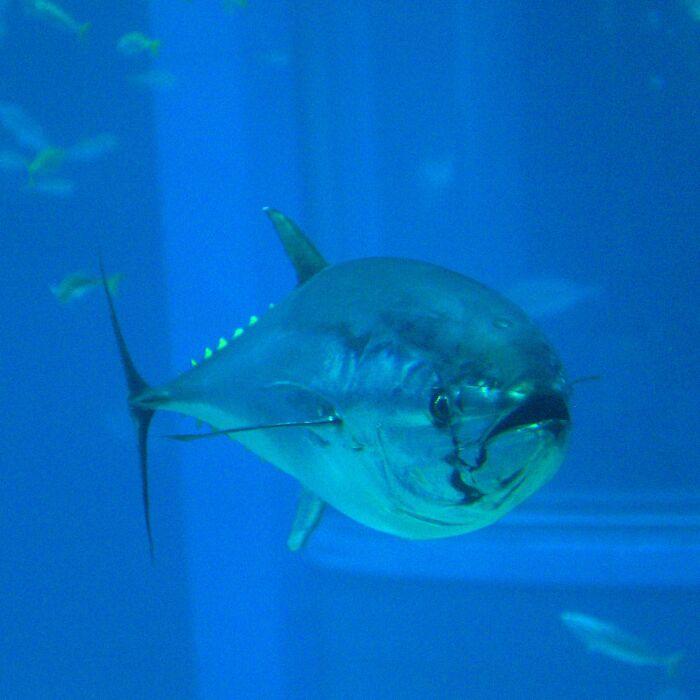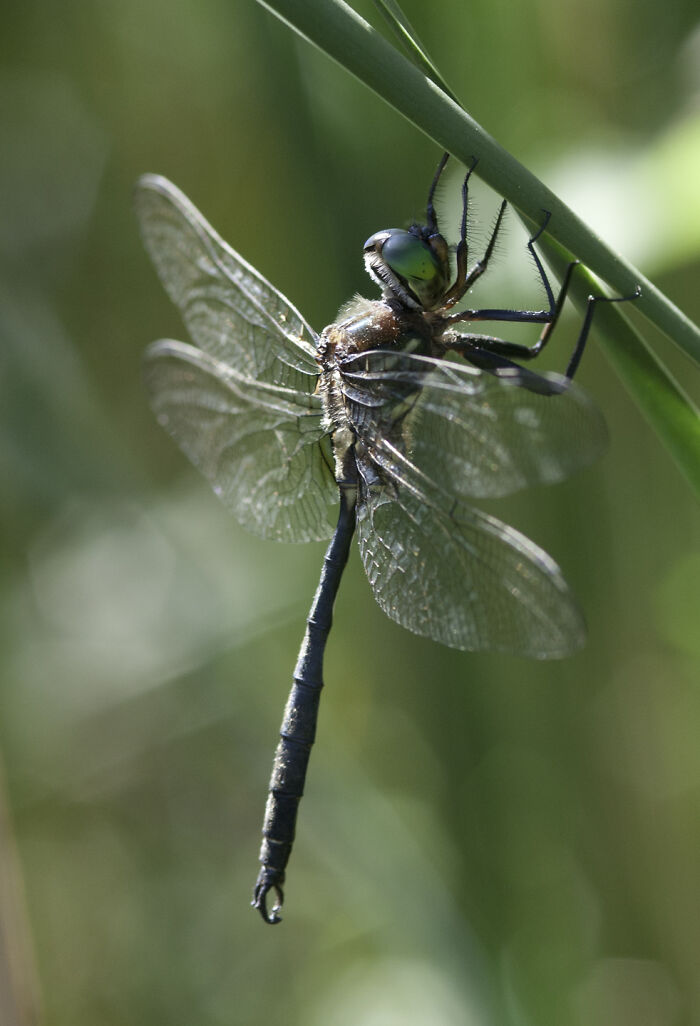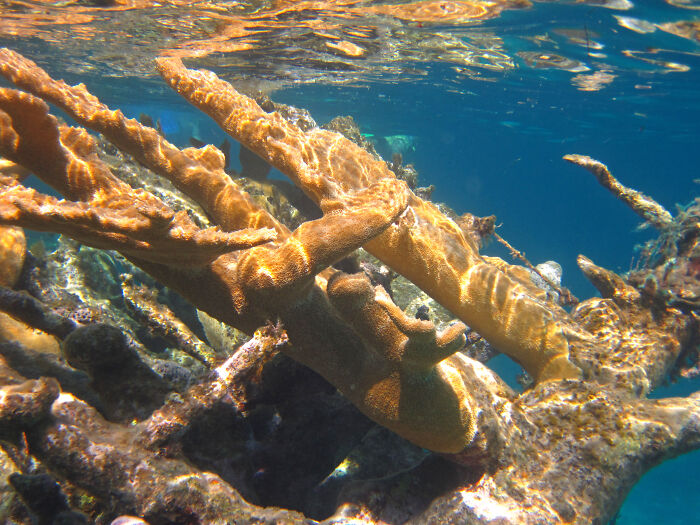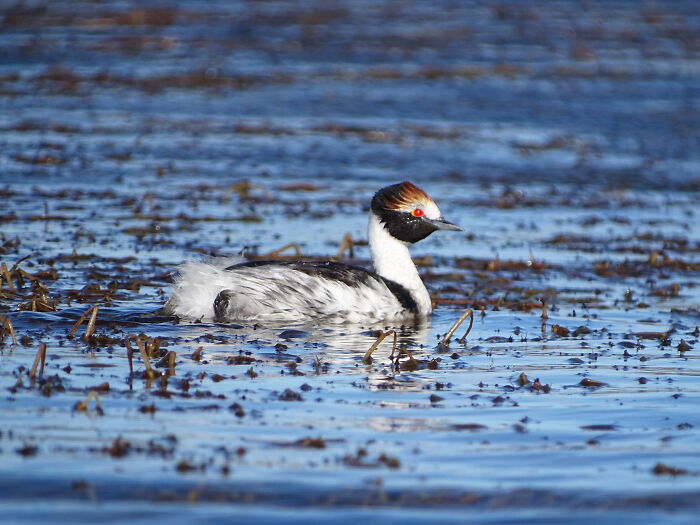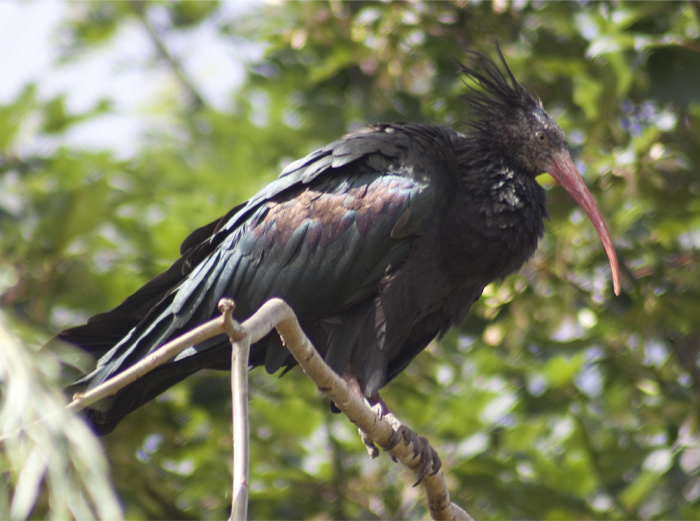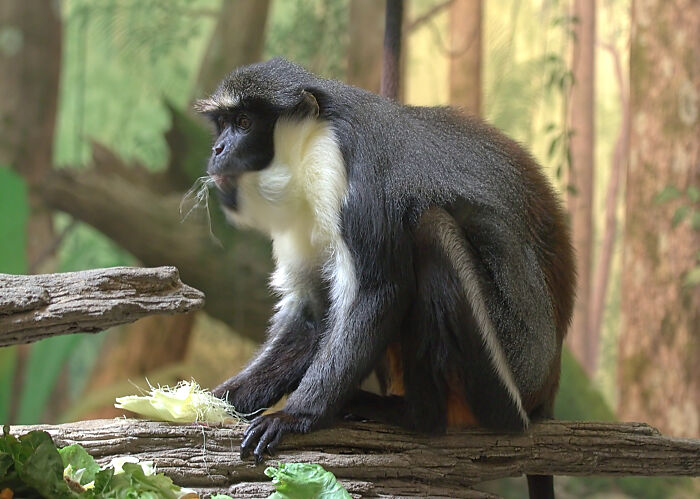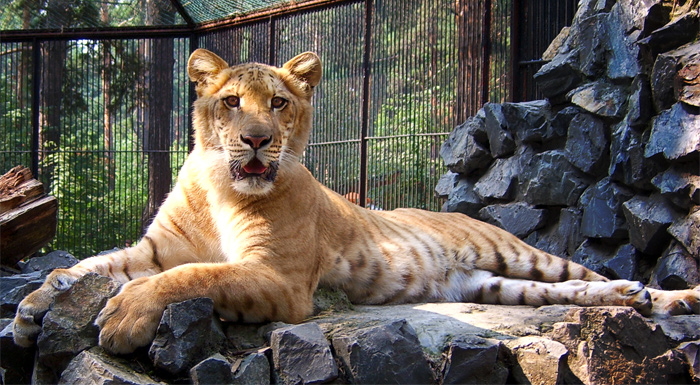The word 'rare' is often associated with something limited, unique, and distinctive, such as rare gems, jewels, antique items, and various collectibles. However, being rare also means that once something is gone, it's gone forever. In the animal world, rare also stands for endangered, which is exactly what the rarest animals in the world are.
According to WWF's recent report, since 1970, wildlife populations worldwide have decreased by an average of 69%. Pollution, global warming, deforestation, and other outcomes of globalization, as well as poaching, are some of the leading causes putting rare species of animals on the verge of extinction. And unfortunately, destruction is often easier than recovery. Thus, the list of the most rare animals in the world is unlikely to decrease any time soon.
According to the IUCN Red List, more than 42,100 species are threatened with extinction and thus can be labeled as rare. Most of those threatened belong to the animal kingdom, making them some of the rarest animals in the world. And while extinction has been a natural part of the planet's evolutionary history, human activity significantly increased its rate. In fact, according to a study published in Science Advances, humans are responsible for 96% of all mammal species extinctions of the last hundred thousand years.
Below, we've compiled a list of some of the most rare animals in the world that are on the brink of extinction. And while some of the rare species of animals are in active conservation, the prospects of others remain dim. Do you know any more rare animals that are missing from this list? Have you ever had a chance to see rare wild animals in real life? Let us know!
This post may include affiliate links.
Fishing Cat (Prionailurus Viverrinus)
The fishing cat is a medium-sized wild cat with short legs, a short tail, and a round, elongated face. Instead of any fishing adaption, their scientific name refers to their viverrine or civet-like look. Their back frequently forms stripes from the rows of parallel black spots on their olive-gray coat, which is covered in this pattern. A notable distinction between the fishing cat and its relatives is that its claws do not fully retract, with the tips still protruding slightly from the skin sheath that covers its toes. In contrast, most cats can completely retract their claws when not using them. The fishing cat has been classified as "Vulnerable" on the IUCN Red List since 2016.
Amur Leopard (Panthera Pardus Orientalis)
While most people associate leopards with the African savannas, a rare subspecies of the species has adapted to living in the temperate forests that make up the northernmost portion of the species' habitat in the Russian Far East. This rare species has been known to leap up to 10 feet vertically and more than 19 feet horizontally. The Far East leopard, the Manchurian leopard, or the Korean leopard are other names for the Amur leopard. The Amur leopard may be the planet's most endangered large cat, with only about 120 individuals in the wild. The IUCN listed the Amur leopard as “Critically Endangered.”
Peacock Tarantula (Poecilotheria Metallica)
The deciduous forest in Andhra Pradesh in India is the peacock tarantula's natural habitat. Unfortunately, the IUCN has listed it as being “Critically Endangered.” Reports state that deforestation poses a persistent threat to their population. It's also interesting to note that the peacock tarantula is the only species of its kind to have blue hair.
What Is Considered A Rare Animal?
So, what exactly is a rare animal, and how do most rare animals in the world get classified as threatened?
You’ll probably be glad to know that the population sizes of every animal species in the world are closely monitored. That’s the bright side. The darker side of this is that once the population of any species drops to around or below 10,000 individuals, it is instantly labeled as rare or threatened. After that, the species either diminish to the near-extinct classification or, due to conservation actions, grow larger in number and lose the feared label.
To put things in perspective, 75% of all known species, based on the count of individuals, can be called rare. Those 75% of species do not only include mammals, but also amphibians, sharks and rays, reef building corals, and birds.
Pangolin
These nocturnal, solitary animals are easily identified by their thick scale covering. At a moment of danger, pangolins will hide their heads with their front legs, exposing their scales to any prospective predators. Unfortunately, pangolins are also one of the most trafficked mammals in the world. Demand for their meat and scales is highest in Asia and is increasing in Africa. Additionally, there is a market for pangolin products in the US, particularly for the leather that may be used for boots, bags, and belts. There are eight pangolin species in total, and all range from “Vulnerable” to “Critically Endangered” (IUCN). Pangolins can be found in forests or grasslands in either Asia or Africa.
Chinese Giant Salamander (Andrias Davidianus)
It is the largest amphibian on the Earth today and a "living fossil" that has witnessed the extinction of the dinosaurs. It's one of the three known "large" types of salamanders that evolved from other amphibians during the Jurassic Period (about 170 million years ago). This enigmatic species is sleek and does not have gills to breathe underwater; instead, it receives oxygen via its skin. This salamander, although a "giant," is now classified as "Critically Endangered" (IUCN) due to overharvesting for human food, habitat loss, and water pollution.
Malayan Tiger (Panthera Tigris Jacksoni)
One of the smallest tiger species, the Malayan tiger, can be found in southern and central Malaysia and southern Thailand. When chasing prey or seeking shelter and privacy in seclusion, this species' orange body with fine black stripes perfectly helps them conceal themselves in the background. Despite that, Malaysia is in danger of losing its only tiger species since just a few Malayan tigers are left in the wild. The main factors that can contribute to prey shortages and a reduction in tiger populations in the wild are habitat loss and fragmentation. Illegal poaching and hunting for tiger body parts are two more dangers facing the remaining Malayan tiger population. The IUCN listed them as “Critically Endangered.”
What Is The Rarest Animal In the World?
The rarest animal in the world is actually a marine animal called Vaquita, and it is very close to becoming extinct. See, there are only about ten individuals left in the Gulf of Mexico, and we’re very close to losing these species forever. You can meet the Vaquita on our list to read more about it and see what it looks like.
When it comes to the rarest land animal in the world, there are several that are on the brink of extinction. The Javan and Black Rhinos, the Amur Leopard, the Sunda Island Tiger, the Tapanuli Orangutan, and plenty more need our immediate attention to not be lost forever.
And if we were to talk about the rare extinct animals, the list would go on and on! There’s the Tasmanian Tiger, the Passenger pigeon, the Dodo… All of these wonderful extinct animals were brought to a sad fate by none other than humans.
African Wild Dog (Lycaon Pictus)
The wild dog, also known as the hunting dog or the painted dog, has a patchy, colorful coat, enormous ears that resemble a bat’s, and a bushy tail with a white tip that may be used as a flag to keep the group together while hunting. It's rare to spot an African wild dog hunting on its own. Although some packs have more than 40 members, wild dogs are gregarious animals and like to congregate in groups of about ten. Most of them are found in southern Africa and the southern portion of East Africa. African wild dogs also have a sprint speed of more than 44 miles per hour. Yet, despite their dexterity, wild dogs remain one of the most endangered mammals in the world.
Blue Whale (Balaenoptera Musculus)
The blue whale, which may weigh up to 200 tons (think 33 elephants), is the largest animal in the world. A small car could fit inside the blue whale's heart, to compare the sizes. It can devour up to four tons of krill daily and hold one ton in its stomach. They are also the loudest animals on the planet, even louder than a jet engine. In the early 1900s, aggressive hunting by whalers in search of whale oil brought them dangerously close to extinction. With the establishment of the International Whaling Commission in 1966, they were finally given protection. Still, since then, their situation has only slightly improved. They remain “Endangered” on the IUCN list.
Absolutely beautiful, magnificent creatures, also largest animals ever to exist, and now they might die. Nice job humans.
Resplendent Quetzal (Pharomachrus Mocinno)
Many people rank the resplendent quetzal as one of the most beautiful bird species on the planet. These brightly colored animals can be found in Central America's mountainous tropical forests, where they eat fruit, insects, lizards, and other small creatures. However, ecosystem destruction brought on by deforestation, forest fragmentation, and agricultural clearing poses the biggest threat to this magnificent species. Today, the IUCN classifies the resplendent quetzal as “Near Threatened.”
Bearcat (Arctictis Binturong)
Bearcats, also called binturongs, are as nimble as cats in the canopy but less so on the ground. This species belongs to the civet and mongoose families, yet it is neither a bear nor a cat. It spends most of its time in the trees, moving slowly and deftly through branches at night as it hunts for fruit and wild organisms. Bearcats are indigenous to South and Southeast Asia. Currently, this species is at risk and classified as “Vulnerable” (IUCN).
Addax (Addax Nasomaculatus)
The addax is a middle-sized antelope that thrives in harsh desert environments. It has long been a resident of the Sahara Desert and flourished in areas where few other creatures could. Both sexes of this antelope have horns that can grow more than a meter long and are slightly curled. Their sleek, short coat is grey-brown in the winter and virtually white in the summer. They consume a tiny amount of water and get all the needed moisture from the foliage they devour. Of all other antelopes, the addax is best suited to arid environments. Yet, the addax is classified as "Critically Endangered" on the IUCN Red List and is the most endangered ungulate in the Sahara and probably the entire globe.
Northern Hairy-Nosed Wombat (Lasiorhinus Krefftii)
The northern hairy-nosed wombat is one of Australia's rarest mammals and the largest marsupial that burrows underground. According to Queensland's Museum, only about 138 northern hairy-nosed wombats are still alive. The fact that there are so few of them that they all live in one population poses the biggest threat to the animal's survival. The northern hairy-nosed wombat, once widespread south to the Victorian border, is now restricted to Epping Forest National Park (Scientific) in central Queensland. Currently, it's listed as "Critically Endangered" by the IUCN.
Largetooth Sawfish (Pristis Microdon)
The largetooth sawfish is one of five varieties of sawfish, which are rays with rostrums that resemble chainsaws. Once swimming in warm waters all throughout the planet, this species appeared in numerous cultures. However, the species is now classified as "Critically Endangered" (IUCN) primarily due to fishing. While their long rostrums are a helpful weapon for hunting and defense, they also put them at risk since they can quickly become trapped in fishing nets.
Seneca White Deer
Rumors of the bizarre herd of white deer residing in the former Seneca Army Depot in Seneca County, New York, have been circulating for years. The "albino" breed of deer has been attributed by many to unforeseen incidents in a botched army experiment. Others claim that an underground cache of radioactive military munitions is to blame for the creatures' appearance. However, neither of these rumors is accurate. Despite being white, the deer are not albinos. They instead possess a recessive gene for a completely white coat. The depot commander forbade hunting of any white deer in the 1950s. Since then, the number of deer has increased to over 700, with roughly 300 being white, making it the largest herd of white deer globally. On the IUCN, they are currently listed as "Least Concern."
South China Tiger (Panthera Tigris Amoyensis)
The South China tiger, also referred to as the "Chinese" or "Amoy" tiger, is said to have originated in China two million years ago. Apparently, it's a remnant population of the "stem" ancestral tiger that all other tiger subspecies (Bengal, Siberian, etc.) are descended from. The South China tiger has been classified as "Critically Endangered" by the IUCN Red List since 1996. Since the last confirmed tiger sighting occurred in 1988, they may be extinct in the wild.
Morelet's Tree Frog (Agalychnis Moreletii)
A leaf frog species belonging to the Phyllomedusidae family is the Morelet's tree frog. It can be found in Mexico, Belize, El Salvador, Guatemala, and Honduras. They have also been called popeye hyla and the black-eyed leaf frog. Its natural habitats include freshwater and sporadic freshwater marshes, subtropical or tropical moist lowland forests, and subtropical or tropical moist montane forests. While rare, they are no longer critically endangered and are currently listed as "Least Concern" by the IUCN.
Rusty-Patched Bumblebee (Bombus Affinis)
A species of bumble bee native to eastern North America is the rusty-patched bumble bee. In the middle of their second abdominal segment, the workers and males of this species possess a little rust-colored patch. They also have distinctively short tongues. In the past, this bee was scattered over the eastern and upper Midwest regions of the United States. However, the species underwent a widespread and rapid decline, and the IUCN listed it as “Endangered” in 2017.
Pygmy Three-Toed Sloth (Bradypus Pygmaeus)
The dwarf sloth, often referred to as the monk sloth or the pygmy three-toed sloth, is a species unique to Isla Escudo de Veraguas, a small island off the Caribbean coast of Panama. The pygmy three-toed sloth is similar to the brown-throated three-toed sloth but considerably smaller than the other three species in its genus. Like other sloths, this one lives in trees and eats leaves. In 2012, pygmy three-toed sloths underwent a census, which put the population at 79. According to the IUCN, the pygmy three-toed sloth is one of the world's top 100 most endangered species and is classified as “Critically Endangered.”
This is my spirit animal :) I can tell you more than you'd ever want to hear about its genetic ancestors (it's crazy what we remember from our school days, huh?)
Philippine Eagle (Pithecophaga Jefferyi)
One of the rarest eagles in the world is the Philippine eagle. It is a huge predatory bird that can only be found in the Philippines on the islands of Luzon, Samar, Leyte, and Mindanao. It is regarded as one of the biggest and strongest woodland raptors. Only 400 pairs thought to remain in the wild are classified as “Critically Endangered” by the IUCN.
Black-Footed Ferret (Mustela Nigripes)
One of the most vulnerable mammals in North America is the black-footed ferret. In fact, they were once believed to be extinct. Yet, after being recovered in Wyoming in 1981, coordinated efforts by various partners have given the species a shot at survival. Currently, just over 300 animals have been returned to the wild thanks to captive breeding, reintroductions, habitat preservation, and cloning. Despite significant progress in recovering the black-footed ferret, disease and habitat loss remain its principal concerns. According to biologists, there should be 3,000 adult ferrets living in the wild to properly restore this listed as an “Endangered” (IUCN) species.
The bothers me because we can prevent most of this ferret's extinction if we would stop breeding them for pets. And im sorry but people owning animals like ferret's racoons monkeys and so on is f***ing ridiculous I know I'm going to get a ton of hate but it's the truth
Mountain Gorilla (Gorilla Beringei Beringei)
One of the two subspecies of the eastern gorilla, this great ape is one of the biggest surviving primates. These apes differ from their lowland cousins because they have longer hair, thanks to which they are more protected from the cold, shorter limbs, muscular arms, a large chest, and broad hands and feet. As their name suggests, they reside in the mountains between 8,000 to 13,000 feet. Only approximately a thousand mountain gorillas are left in the world, and half of them are found in the forests of central Africa's Virunga mountains. Increasing human populations and continued encroachment severely threaten this great ape's habitat. As people move closer to these endangered apes, they also bring the risk of human diseases such as the flu, pneumonia, and even Ebola. The IUCN listed them as “Endangered.”
Mediterranean Monk Seal (Monachus Monachus)
It is thought that the Mediterranean monk seal, the world's rarest species of pinniped, is an endangered species of earless seal. Its skin is coated in tiny hairs that are either black (males) or brown to dark grey (females) in color. Unlike their Hawaiian counterpart, which often has more forward nostrils, their snout is short, thick, and flat, with highly noticeable, long nostrils that face upward. There are now only 600 to 700 Mediterranean monk seals left. The main threats to the Mediterranean monk seal are the migration of populations and the degradation of habitat, intentional human slaughter, bycatch, and fishery entrapment. The IUCN has classified it as "Endangered."
Vaquita (Phocoena Sinus)
The vaquita, the rarest marine mammal in the world, is in danger of going extinct. The swift extinction of the vaquita in Mexico, where there are now just around ten individuals left, is a prime example of the situation of cetaceans — whales, dolphins, and porpoises — as a whole. It wasn't until 1958 that this tiny porpoise was found, and now, a little more than 50 years later, we are in danger of losing them forever. Gillnets are frequently employed by illicit fishing operations in Mexico's Gulf of California to catch and drown vaquita. In the most recent few years, the population has substantially decreased. The IUCN has vaquitas listed as “Critically Endangered.”
Hector's Dolphin (Cephalorhynchus Hectori)
The smallest and rarest marine dolphins in the world are Hector's dolphins. They have short, stocky bodies, striking black face markings, and a dorsal fin that resembles Mickey Mouse's ear. The population of the highly endangered Maui dolphin subspecies is thought to be only 55. Their home is the shallow coastal waters along the western beaches of New Zealand's North Island. Hector's dolphin is currently listed as an "Endangered" species by the IUCN, with an estimated population of about 7000.
Black Tiger
Although it is a rare color variation, the black tiger is neither a separate species nor a geographical subspecies of the tiger. Pseudomelanization is the cause of alleged black tigers. However, pseudo-melanistic tigers are real in the wild and in zoos, yet they are very rare. It is claimed that inbreeding is making these tigers more prevalent. They are also alleged to be smaller than typical black tigers, which may result from inbreeding or the mistaken identification of sizable black leopards as black tigers.
Greater Bamboo Lemur (Hapalemur Simus)
Greater bamboo lemurs are Madagascar's endemic species. Today, they can be found primarily in southeast Madagascar, which has the greatest concentration of bamboo, access to drinking water, and the shortest dry season. The larger bamboo lemur is actually regarded as one of the top 50 most evolutionary distinct mammals. However, the greater bamboo lemur is also classified as “Critically Endangered” by the International Union for Conservation of Nature (IUCN). They are not only hunted for food, but their habitat is also getting smaller every year due to slash-and-burn farming, deforestation, mining, and bamboo cutting.
California Condor (Gymnogyps Californianus)
The largest bird in North America is the majestic yet endangered California Condor. These amazing gliders travel far and wide in search of animal carcasses to feed on. In the 1980s, there were just 22 birds left in the population. Today, the situation is a little better, yet still, only roughly 275 birds fly over California, Utah, and Arizona, with more remaining in captivity. However, their diet is also what poses a severe risk to their long-term prospects. Feeding on corpses, condors unintentionally consume lead particles, which may lead to poisoning, which can end with a fatality. The IUCN listed them as “Critically Endangered.”
Aren’t these the ones who asexually reproduced when there weren’t any males left?
Yangtze Finless Porpoise (Neophocaena Asiaeorientalis)
The Yangtze finless porpoise and the Baiji dolphin, two different species of dolphin, used to live in the Yangtze River, the longest river in Asia. However, it was found that the Baiji dolphin was functionally extinct in 2006. This was the first time in recorded history that human activities have caused the extinction of an entire dolphin species. The Yangtze finless porpoise, a close relative, is renowned for its cheeky smile and has intelligence on par with a gorilla. Currently, it's listed as "Critically Endangered" by the IUCN.
Black-Spotted Cuscus (Spilocuscus Rufoniger)
Among the marsupial species in the Phalangeridae family is the black-spotted cuscus. It is a really colorful species that can be found in the northern New Guinean woodlands. It has already vanished from a significant portion of its range and is still threatened by hunting and habitat loss. As a result, the IUCN has classified it as "Critically Endangered."
Sumatran Orangutan (Pongo Abelii)
Living in the trees of tropical rainforests, the Sumatran orangutan is almost entirely arboreal. The Sumatran orangutan was once found all over the island of Sumatra and farther south into Java. The provinces of Aceh and North Sumatra currently make up the majority of the species' range, primarily limited to the island's northern part. Unfortunately, only seven of the nine Sumatran orangutan groups currently in existence have the potential for long-term survival. According to the IUCN Red List, only about 14,000 Sumatran orangutans are alive, making them a “Critically Endangered” species.
Saola (Pseudoryx Nghetinhensis)
Even 20 years after its discovery, very little is known about the mysterious saola, often known as the Asian unicorn. However, this rarely observed species is already critically endangered because there are no specimens in captivity. To this day, only four instances of a saola in the wild have been conclusively documented by scientists. They can only be found in Vietnam and Laos' Annamite Mountains.
Rondo Dwarf Galago (Paragalago Rondoensis)
A primate species in the Galagidae family is the Rondo dwarf galago or Rondo bushbaby. The tiniest members of the genus Galagoides are the dwarf galagos. They only exist in Tanzania, where subtropical or tropical dry woods are their natural habitat. Their populations have decreased due to their reliance on a particular environment, which has effectively deteriorated, making them an “Endangered” species on the IUCN’s Red List.
Red Wolf (Canis Rufus)
The southeastern region of the United States is home to the red wolf. It has several morphological traits with the eastern wolf of eastern Canada and is intermediate in morphology between the coyote and gray wolf. The correct taxonomic classification of the red wolf has been a point of contention for well over a century and is still up for debate. Due to critically low population numbers, it has been classified as a “Critically Endangered” species by the IUCN since 1996. According to data available, as of October 2021, only eight red wolves are known to remain in the wild in North Carolina.
Ploughshare Tortoise (Astrochelys Yniphora)
Between 2015 and 2018, there was an abrupt rise in ruthless poaching for the illicit wildlife trade, which may have driven the ploughshare tortoise to the point of being nearly extinct in the wild. Due to the plough-shaped protrusion on the front of their shell, they have earned the moniker "ploughshare." Their very distinctive golden-domed shells are very much why wildlife traffickers are on the hunt for them. Ploughshare tortoises are only found in a small area of Madagascar in the arid woodlands of Baly Bay National Park.
Sumatran Rhinoceros (Dicerorhinus Sumatrensis)
The only Asian rhinoceros with two horns, Sumatran rhinoceroses are also the smallest. They have thick fur and are more similar to extinct wooly rhinos than any other living rhino species. The Sumatran rhino once roamed as far as Bhutan, eastern India, the foothills of the Eastern Himalayas, Myanmar, Thailand, and probably Vietnam and China. Only the Indonesian islands of Sumatra and Borneo are home to the species now. Currently, Sumatran rhinoceros are listed as “Critically Endangered” (IUCN).
Hainan Gibbon (Nomascus Hainanus)
The Hainan gibbon is the rarest species of ape and perhaps mammal on the entire planet. With only an estimated 28 individuals left today, the Hainan gibbon, once numbering approximately 2,000 individuals in the 1950s, saw a sharp drop in the late 20th century due to habitat degradation and poaching. It is now one of the most threatened species in the world. On China's Hainan Island's Bawangling National Nature Reserve, a single forest patch is the only place where the remaining population may be found. The IUCN listed this species as “Critically Endangered.”
Hispaniolan Solenodon (Solenodon Paradoxus)
Only on the island of Hispaniola do venomous mammals known as Hispaniolan solenodons reside. These creatures resemble large shrews. Most of their bodies are generally dusky brown, with a whiter underbelly and reddish fur on the sides of the head, throat, and upper chest. The legs, snout, tail, and eyelids are all hairless. Hispaniolan solenodons have enormous heads, long rostrums, and tiny eyes; body fur partially conceals their ears. Currently, the IUCN has them listed as "Least Concern."
Golden-Rumped Elephant Shrew (Rhynchocyon Chrysopygus)
All elephant shrews have long, flexible snouts. However, golden-rumped elephant shrews can be recognized by their brilliant golden rump and stiff fur covering their forehead. The tail has a short coat, but most of it is black, as are the feet, ears, and legs. All elephant shrews walk on the tips of their fingers and toes. A small portion of Kenya's coastal lowland semi-deciduous forest and the damp, dense coastal scrub forest are home to the golden-rumped elephant shrew. It is also classified as “Endangered” (IUCN).
Ganges River Dolphin (Platanista Gangetica Gangetica)
The Ganges river dolphin has a robust yet flexible body with broad flippers and a low triangular dorsal fin. Interestingly, males are generally smaller than females. However, males mature earlier, and females don't reach sexual maturity until they are between 10 and 12. The Ganges river dolphin's population, which once numbered in the tens of thousands, has drastically decreased over the past century to less than 2000 due to indiscriminate fishing, direct slaying, and habitat fragmentation caused by dams and barrages. Due to these factors, its populations are still declining even with a high level of protection. The IUCN listed them as “Endangered.”
Borneo Pygmy Elephant (Elephas Maximus Borneensis)
The woods of northern Borneo, Malaysia, and Indonesia are home to the Borneo pygmy elephant. The pygmy elephant is the world's smallest subspecies of the elephant. They stand at less than 8.2 feet and have broad ears, wide tummies, and long tails that may brush the ground when they move. A pygmy elephant's solitary, prehensile finger at the tip of its trunk is used to pick up grasses, leaves, fruits, and other vegetation. Only 1,500 pygmy elephants, found mainly in Sabah in Malaysian Borneo, are assumed to still exist in the wild. They are an “Endangered” (IUCN) species, with the loss of habitat being these elephants' main threat.
Angel Shark (Squatina Squatina)
Angel sharks are flat-bodied sharks that can reach lengths of 2.4 meters. The Eastern Atlantic and Mediterranean Seas are their home. They are typically found in coastal waters submerged in sandy areas. The world's second most endangered family of elasmobranchs (sharks, skates, and rays) is the Squatinidae, which includes angel sharks. On the IUCN Red List of Threatened Species, this species is classified as “Critically Endangered.”
Dama Gazelle (Nanger Dama)
The unusual fur coloration of the dama gazelle makes them easy to identify. Most of their body is reddish brown, while the head, rump, and underbelly are white, and both genders possess horns. The “Critically Endangered” (IUCN) dama gazelle, the largest gazelle species, is also one of the rarest. There are about only 400 of them left in the wild, mainly in Sudan and Chad.
Gharial (Gavialis Gangeticus)
Asian crocodilians called gharials, also known as gavials, are recognized by their long, thin snouts. The highly endangered gharial's habitat was once located in freshwater river systems from Pakistan to Myanmar, but it is currently only found in India and Nepal. Gharials are also classified as “Critically Endangered” (IUCN).
Purple Frog (Nasikabatrachus Sahyadrensis)
The Nasikabatrachidae family of frogs includes the species known as the purple frog. It can be found in the Western Ghats in India. The loose, moist, well-aerated soil around ponds, ditches, and streams is preferred by this burrow-dwelling frog. Indian purple frog and pignose frog are some English names also used for this species. The purple frog is currently listed as an "Endangered" species by the IUCN.
Hirola (Beatragus Hunteri)
Eastern Africa, particularly the southern part of the Kenya-Somali border, is home to the severely endangered antelope known as the hirola. These antelopes have horns that are ridged along three-quarters of their length and are very pointy. As hirola get older, their coat darkens to a slate gray color, and their horns develop more ridges. Yet, hirola are best known as "four-eyed antelopes" due to their prominent, dark sub-orbital glands utilized for territorial marking. Since the 1970s, this antelope species has been declining quickly, making it the smallest known population with less than 500 individuals remaining. The IUCN has hirola listed as “Critically Endangered.”
Cuban Rock Iguana (Cyclura Nubila)
The largest of the West Indian iguanas, which are among the most threatened lizard species in the world, is the Cuban rock iguana. The Cuban rock iguana is found in the rocky southern coastal regions of Cuba's mainland and the nearby islands, with a feral population living on Puerto Rico's Isla Magueyes. Cuban rock iguanas have crimson eyes with gold irises, a thick tail, and spikes on their jowls. The IUCN listed them as “Vulnerable.”
The presence of a "feral population" implies that these iguanas were domesticated at one time lol
Cuban Greater Funnel-Eared Bat (Natalus Primus)
A species of bat belonging to the Natalidae family is the Cuban funnel-eared bat. It can be found in the Caribbean islands of Hispaniola, Jamaica, the San Andrés Archipelago of Colombia, and Providencia and Santa Catalina. Although some accounts claim that only a few hundred of the species' original population are still alive, the global number remains unknown. They are listed as “Vulnerable” by the IUCN.
Spoon-Billed Sandpiper (Calidris Pygmaea)
Birds with spoon-shaped beaks, or spoon-billed sandpipers, are unusual species. Rarely is a name so fitting, as spoon-billed sandpipers' bills do resemble tiny spoons! These unique little birds, often known as "spoonies," comb the sand, mudflats, and other shallow wetland areas with their utensil-like appendages in search of small crustaceans to eat. They may be observed wading through the shallows while swaying their bills. Sadly, there are presently not many to be seen. With less than 200 pairs left in the entire world, they are very close to extinction and are currently listed as “Critically Endangered” (IUCN).
Colombian Dwarf Gecko (Lepidoblepharis)
This tiny gecko, a member of the Lepidoblepharis genus of lizards, also known as the scaly-eyed geckos, measures just over 2 cm in length (excluding its tail). Dwarf gecko species belonging to this genus are found in Central and South America and separated from all other lizards more than 70 million years ago. That was before the demise of the dinosaurs and coincided with the last time humans and lemurs had a common ancestor. Increasing rates of wildfire, livestock grazing, and deforestation threaten both areas where the gecko is found. The IUCN has classified the Colombian dwarf gecko as "Critically Endangered."
Banded Ground-Cuckoo (Neomorphus Radiolosus)
The large bird of the moist foothill rainforest is one of the most uncommon and sought-after birds in western Colombia and northwest Ecuador. The adult banded ground-cuckoo has dark, primarily black, feathers with buffy edges that give it a scaly appearance. The rump is blackish-brown, whereas the lower back is brown with fine black bars. The long, black tail has a greenish and purplish sheen. This species has a very tiny and fragmented population, with most of its range experiencing rapid habitat loss and degradation. The IUCN initially listed the banded ground-cuckoo as "Threatened," then as "Endangered" in 1994, "Vulnerable" in 2000, and again as "Endangered" as of 2009.
Cuban Snail (Polymita Picta)
Arguably, the world's greatest variety of snails can be found in Cuba. Yet, none have shells with such a wide variety of hues and intricate patterns as Polymita Picta does. These painted snails have long been sought after by collectors, who either trade them to countries like the United States and Europe or sell the shells to tourists. This is one of the reasons Cuba labels all six Polymita genus species as highly endangered and why it has been forbidden to take these snails from the wild. Along Cuba's eastern coastline, there is a sparse band of vegetation where painted snails can be found.
Seychelles Sheath-Tailed Bat (Coleura Seychellensis)
The central granitic islands of Seychelles are home to the sac-winged bat known as the Seychelles sheath-tailed bat. It is an insectivorous bat that spends the daytime in group roosts and feeds mainly at night in forest clearings. Although it was once widespread throughout the island group, it only exists on three islands today. The IUCN has classified it as "Critically Endangered" due to the drastic decline in its population.
White-Winged Flufftail (Sarothrura Ayresi)
One of nine flufftail species found in Africa is the white-winged flufftail, a small, elusive bird. Only the high-altitude marshes of Ethiopia and South Africa are known to host them continuously. Currently, the white-winged flufftail is categorized by the IUCN as "Critically Endangered" and is thought to be close to going extinct. With about 50 mature birds left in the entire country, it is one of the rarest bird species in South Africa.
Cebu Flowerpecker (Dicaeum Quadricolor)
A small bird unique to the Philippines is the Cebu flowerpecker. It was rediscovered in 1992 in a small area of limestone woodland in the Central Cebu Protected Landscape after it was feared to have gone extinct in the early 20th century. Since then, it has been located at three more locations. The Cebu flowerpecker is typically active in the mornings to avoid competing with more aggressive birds. It feeds on small fruits and mistletoe plants. Despite efforts to safeguard its habitat, the species is still “Critically Endangered” (IUCN) because of illicit logging.
Chacoan Peccary (Catagonus Wagneri)
The Chacoan peccaries are sizable mammals that resemble pigs. Due to their untamed, impenetrable environments, Chacoan peccaries have also earned the moniker "pigs from green hell." In the arid Gran Chaco of western Paraguay, northern Argentina, and southeast Bolivia, where temperatures are high and rainfall is scarce, Chacoan peccaries can be found. This unusual creature is the largest member of the peccary family and differs from them in several ways. The Chacoan peccaries are larger and darker, have longer ears and tails, and, unlike other peccaries, have three hind toes. They also have bristle-like fur that is white on their shoulders and have a dark stripe going down their backs. The IUCN has classified the Chacoan peccary as "Endangered."
Bluefin Tuna (Thunnus Thynnus)
The bluefin tuna are nomadic and have a lifespan of up to 40 years. They are also shaped for speed; they have a torpedo-like build, retractable fins, and eyes flush with the body. As soon as they hatch, they begin to hunt for schools of fish like herring, mackerel, and even eels. Apparently, they have the best vision of any bony fish and hunt exclusively by sight. The Atlantic species is the largest and most endangered bluefin, followed by the Pacific and Southern varieties. The Mediterranean Sea, which hosts the world's most significant bluefin tuna fishery, provides the majority of the captures of Atlantic bluefin tuna. In the 2021 Red List update, the IUCN moved it from “Endangered” to “Least Concern.”
Hine’s Emerald Dragonfly (Somatochlora Hineana)
One of the most endangered dragonflies in North America is the Hine's emerald dragonfly, also known as the Ohio emerald, Hine's bog skimmer, and hook-tipped emerald. The Hine's emerald dragonfly has a wingspan of around three and one-third inches and measures about two and a half inches long. Its body is metallic green, and its eyes are bright green. The sides of the body are striped in yellow. Habitat loss, urban sprawl, off-road vehicles, agricultural development, road and pipeline building, logging, and groundwater contamination from pesticides and other toxins are the biggest threats to the Hine's emerald dragonfly. The IUCN listed them as “Near Threatened.”
Elkhorn Coral (Acropora Palmata)
One of the most significant corals in the Caribbean is the elkhorn coral. Over the past 5,000 years, elkhorn coral, together with staghorn coral and star coral, helped form Caribbean coral reefs. The population of this species is currently less than 3% of what it was in the early 1980s due to a severe disease episode that resulted in significant mortality across its range. Nowadays, ocean warming poses the biggest threat to elkhorn coral because it causes the corals to release the algae that are a source of food and live in their tissue, usually leading to their demise. The IUCN listed them as “Critically Endangered.”
Hooded Grebe (Podiceps Gallardoi)
A medium-sized grebe, the hooded grebe, is located in southern Argentina. It reaches a length of around 32 cm and is black and white in color. It inhabits solitary lakes in Patagonia's most remote regions and can be seen there during the winter months. The species' Red List status was changed from "Endangered" to "Critically Endangered" in 2012.
Northern Bald Ibis (Geronticus Eremita)
The bird flying in Austria's Salzach Valley on a mild summer day initially resembles a crow due to its black body and large wings. But it's evident right away that this is a vastly different bird when it lands in a nearby meadow. It is a critically endangered bird known as the northern bald ibis. Some time ago, the species was widely spread throughout northern and eastern Africa, Asia Minor, Arabia, and Europe. However, the northern bald ibis is now on the verge of extinction, with some tiny groups in Morocco, Turkey, and possibly a few birds in East Africa.
Diana Monkey (Cercopithecus Diana)
Diana monkeys are medium-sized primates with slim bodies, long legs, and long tails found in Western Africa. Black faces and backs, white fronts and undersides, one white stripe along the outside of the thighs, and a reddish rump are characteristics of this species. The crescent-shaped band of white hair on the brow of Diana monkeys is thought to resemble that of the Roman goddess Diana, who guards nature and woodlands, hence the name. Sadly, Diana monkey populations are dwindling due to deforestation and being coveted by hunters. The IUCN listed them as “Endangered.”
Liger (Hybrid Offspring Of A Male Lion And A Female Tiger)
The biggest cat in the world is a liger, the offspring of a male lion and a female tiger. This indicates that the liger's parents are of a different species, yet they belong to the same genus. Because the habitats of the parental species do not intersect in the wild, ligers are currently only found in captivity. Usually, they outgrow both of their parent species. Another fun fact is that ligers can weigh up to 165 kg at the end of their first year since they grow at a rate of 1 kg every two days. Thus, by the time they are three years old, they can weigh more than 320 kg. However, as ligers are neither full lions nor tigers, they are not considered in need of protection, despite being rare.
Humans f*****g suck. So many animals have been killed off because of our stupidity, recklessness, and just because humans don't care. F*****g bees are going extinct, the very things that are keeping this planet alive are going extinct. The people who have the power to do something would rather sit back and watch. We're setting ourselves up for our own extinction at this point, and frankly, I can't wait for the day. P.S. remember to recycle, and if you can, plant a tree or two, it's not much, but it can really help in the long run.
And plant native wild flowers instead of a f*****g lawn
Load More Replies...The Saimaa ringed seal should be on this list. Only about 200 of them left, all living in one lake.
Humans f*****g suck. So many animals have been killed off because of our stupidity, recklessness, and just because humans don't care. F*****g bees are going extinct, the very things that are keeping this planet alive are going extinct. The people who have the power to do something would rather sit back and watch. We're setting ourselves up for our own extinction at this point, and frankly, I can't wait for the day. P.S. remember to recycle, and if you can, plant a tree or two, it's not much, but it can really help in the long run.
And plant native wild flowers instead of a f*****g lawn
Load More Replies...The Saimaa ringed seal should be on this list. Only about 200 of them left, all living in one lake.
